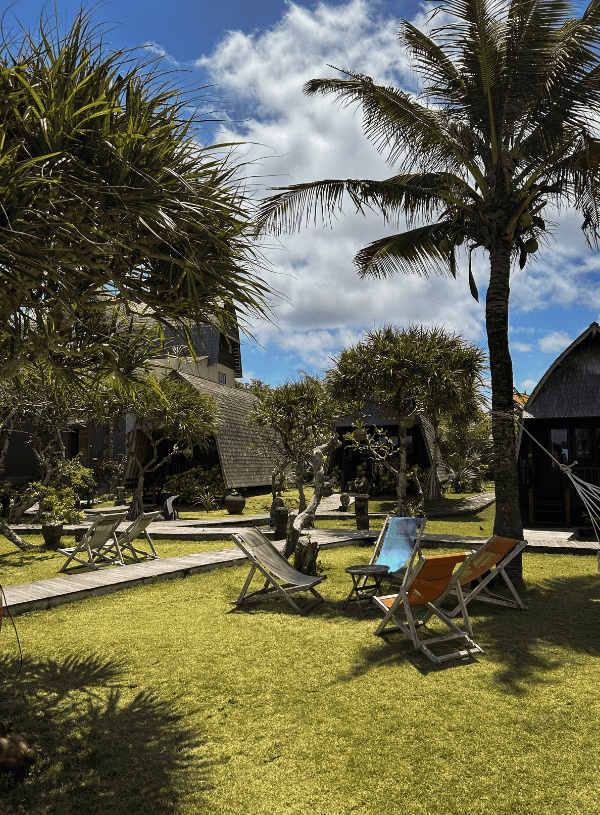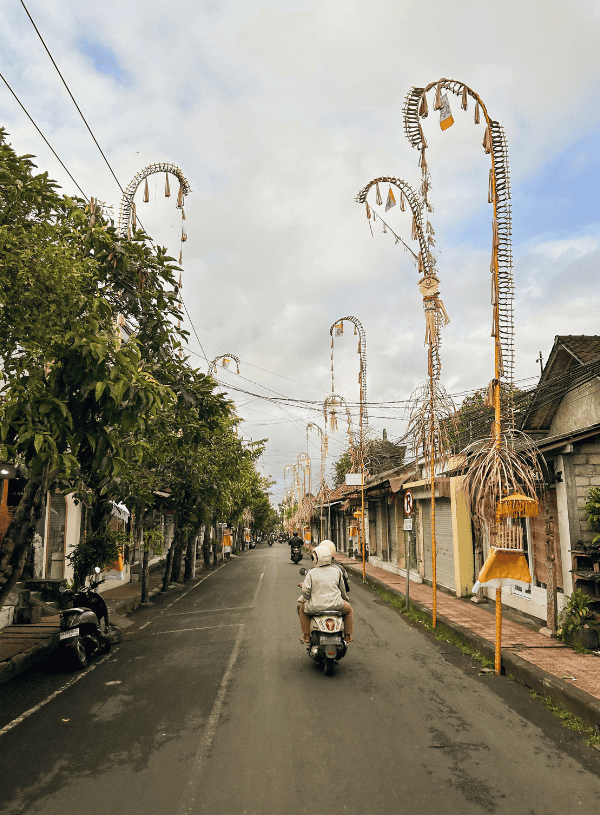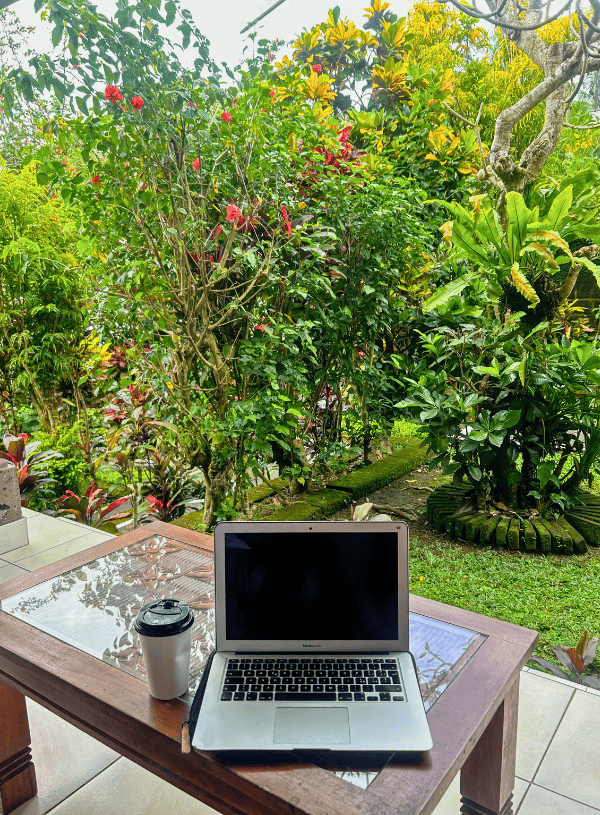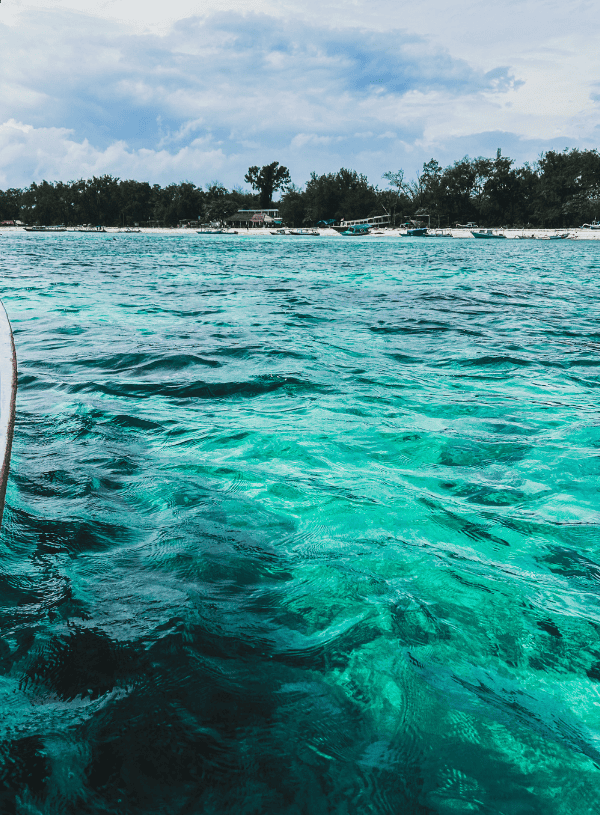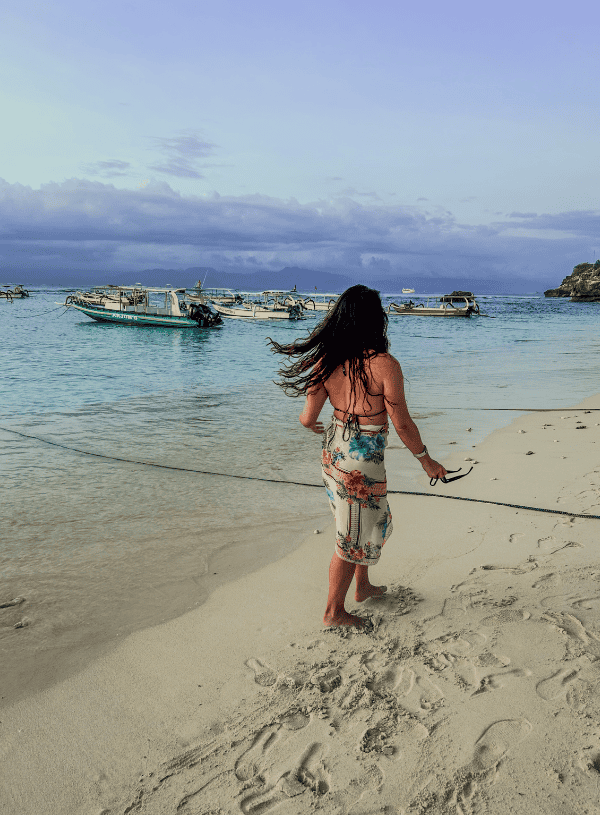Best Places to Stay in Bali: 2025 Guide For First Timers
Last Updated on November 26, 2025
Are you planning your first trip to Bali and wondering where to stay as a first-time visitor? I’ve been living here for the past three months and have taken more than a couple of trips.
Bali might look small on the map, but the distances from north to south are actually huge (especially considering the roads aren’t exactly the best). On top of that, every area feels really different, giving you a totally unique experience depending on where you decide to stay.
To make things easier, in this post, I’m sharing the best places to stay in Bali for first-timers, the pros and cons of each (at least the ones I know well), plus a few extra spots I haven’t been to yet but that are on my list for future trips.
This article may contain affiliate links. This means that if you purchase through one of the links, I may be paid a small commission at no extra cost to you. Thank you for supporting the blog and allowing me to keep sharing meaningful travel experiences with you.
Did you find it helpful? 📌 Save it on Pinterest!
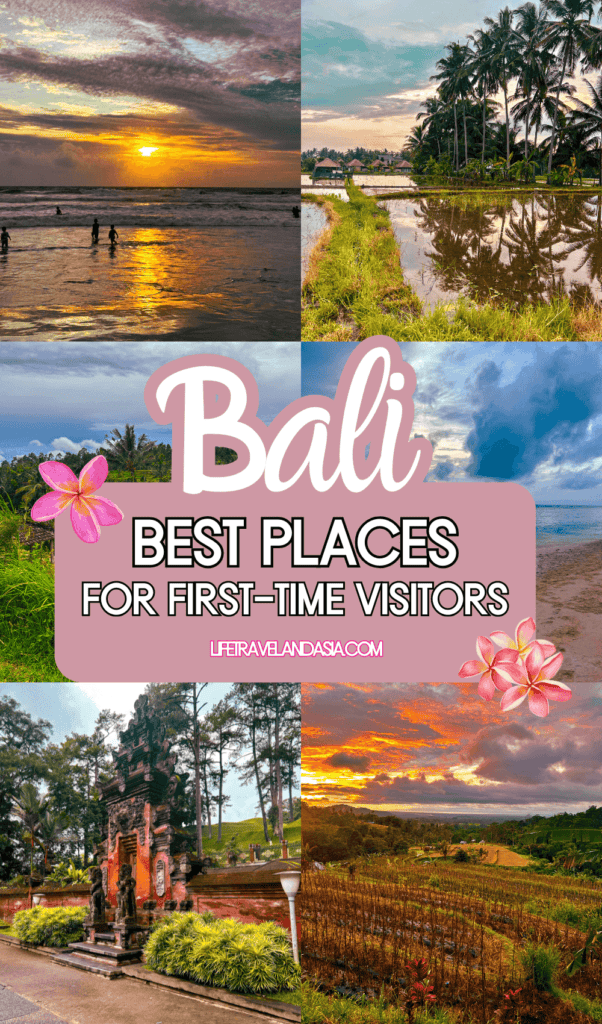
5 Tips to Plan Your First Time in Bali
My first trip to Bali in December 2024 lasted 10 days, and I stayed in five different places for 2–3 days each: Seminyak, Bedugul, Ubud, the Gili Islands (technically not part of Bali), and Uluwatu.
While I loved that trip, there are definitely a few things I would do differently now.
In this section, I’ll share what I’ve learned from that experience and from living here, so you don’t end up making the same mistakes.
1. How Many Days In Bali?
I’d say it’s worth spending at least 10 to 15 days in Bali—definitely not less. If you’re planning on moving around the island, that amount of time is perfect for visiting 3 or 4 different areas.
Some places are really worth exploring in depth, like Ubud, Sidemen, or Munduk, where you’ll want to stay at least three full days.
Others, on the other hand, don’t have much going on besides partying and resorts. If you’re more of a “relax and unwind” type, you could split your time between mainland Bali and then spend about a week on one of the islands nearby.
2. Always Consider Traffic & Road Conditions
If you’re heading from Central Bali (around Ubud) down to the south, you can pretty much count on finding traffic from 8 am onwards.
That’s why packing your itinerary with too many locations or planning really long car journeys isn’t the best idea.
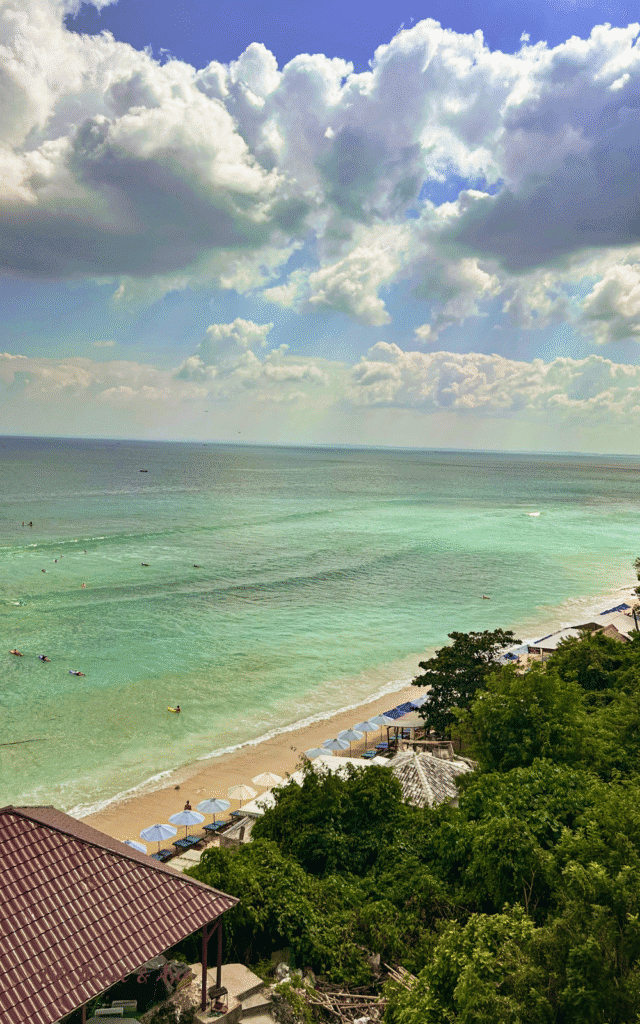
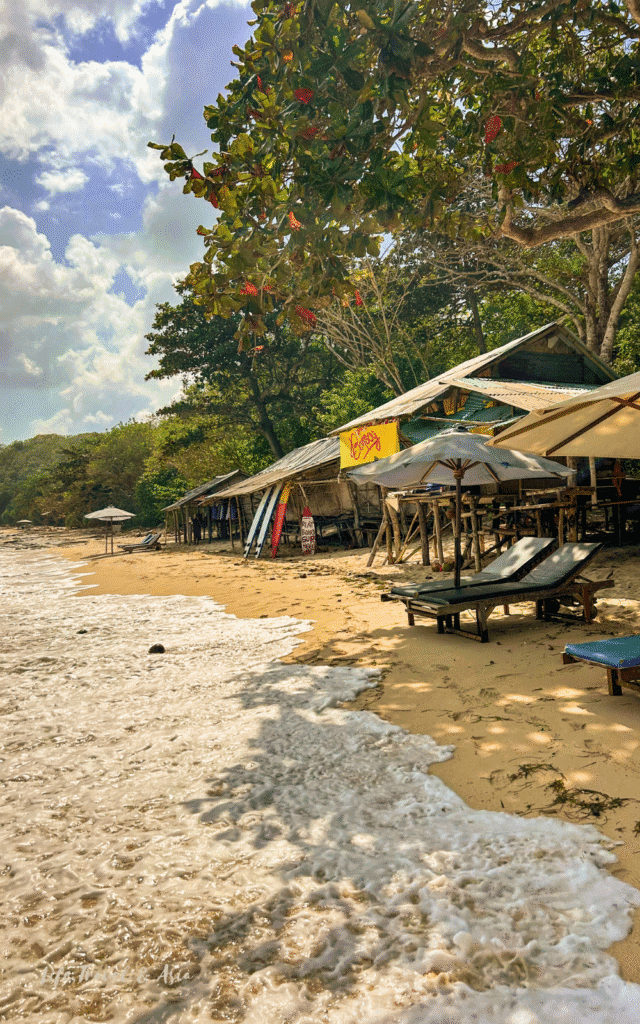
(For example, I definitely wouldn’t recommend doing a day trip to Uluwatu if you’re staying in Canggu, Seminyak, or further north.)
On top of that, Bali’s roads are a bit different. Around Denpasar, they’re fine—three lanes, well-paved—but the further north you go, the narrower they get (sometimes barely wide enough for two cars).
In some cases, there’s literally just one road leading to a destination, which of course can mean… more traffic.
3. Weather & Best Time To Visit
You’ll read everywhere that the best time to visit Bali is during the dry season, from April to September. That might have been true in the past, but honestly, there aren’t really any fixed rules anymore.
Today is the first of October, and the sun is shining, but when I arrived at the end of June, it rained nonstop for two weeks.
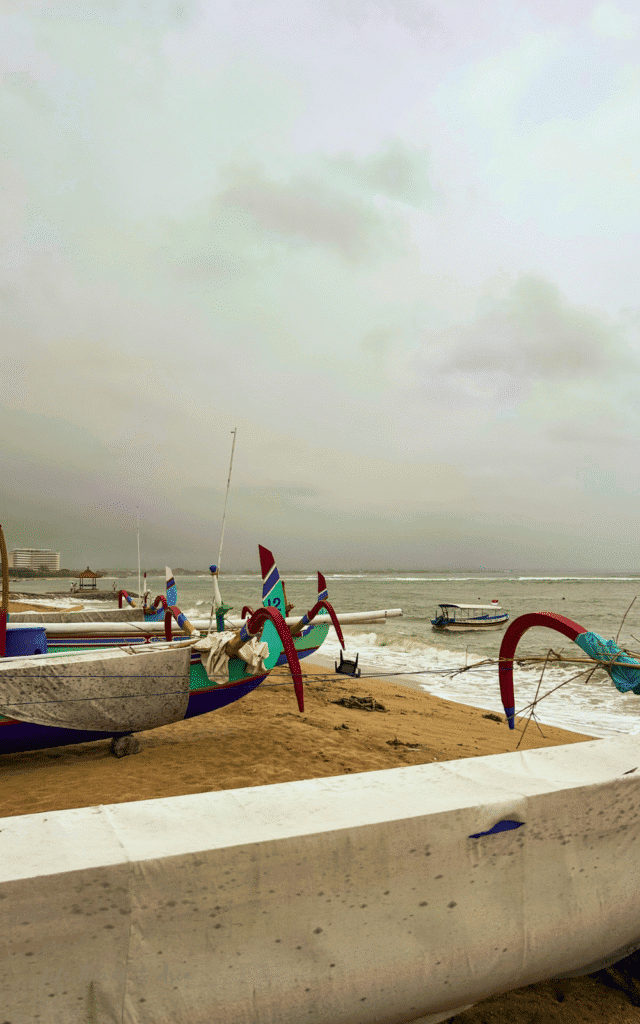
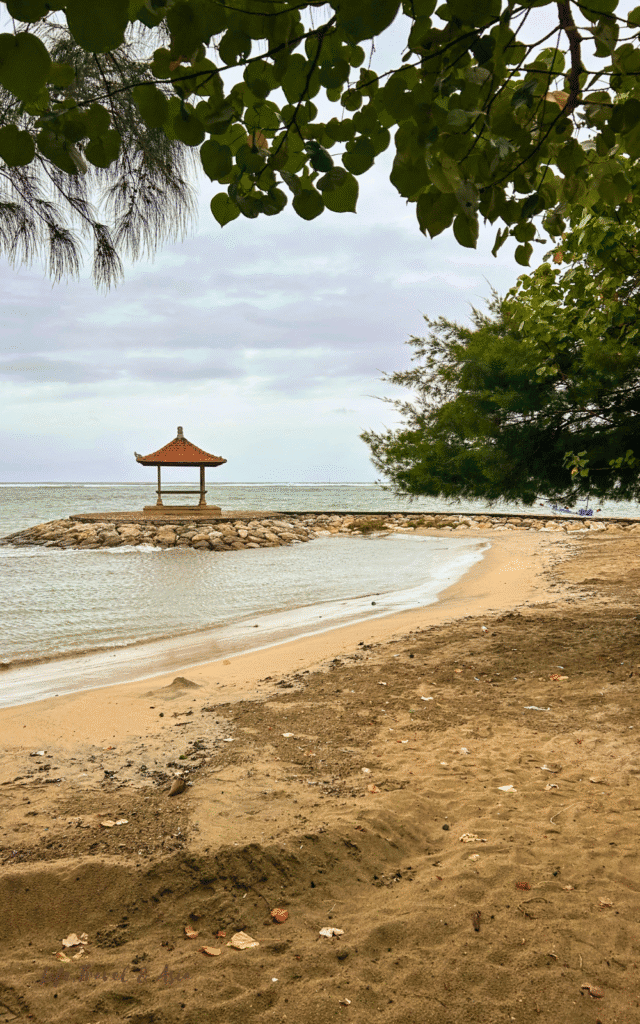
Bali’s weather is definitely unpredictable, and you might end up here during one of those “rainy dry season” weeks when the sun refuses to show up.
The first thing to keep in mind when it rains is that the weather can affect your plans: roadblocks, flooding, closed harbors, and no fast boats to the islands – it happens. The second is that you’ll need a bit of flexibility and a plan B.
🌧️ If you’re looking for some inspiration, here are some of my favorite rainy-day activities in Bali. I’m referring to Ubud in the article, but these are very popular activities throughout the island. Many of these can really lift your spirits when the island is grey and wet.
4. How To Get Around in Bali?
I think I’ve seen a small red public bus a couple of times around Ubud heading south, but as a general rule, there’s basically no public transportation in Bali.
When it comes to getting around, you’ll want to think about two situations: moving within a city and traveling across the island. Here are a few options to consider:
Moving Within a City
Grab or Gojek: In the main tourist areas, Grab or Gojek are easily accessible and probably the best way to get around if you’re not confident driving a scooter yourself or don’t feel like dealing with traffic.
No Grab/Gojek Areas
Even in big tourist areas, there are spots where Grab or Gojek bikes aren’t allowed to stop, or where you won’t see many around.
Getting there is usually fine, but the way back can be tricky. The best thing to do is ask your Grab/Gojek driver if they’d be willing to pick you up later in case you can’t find another one.
You can swap numbers (if you feel comfortable with it) and text them when you’re ready to head back.
Rent a scooter: Renting a scooter is definitely the most flexible way to get around. The downside? Traffic in many areas can be extremely chaotic, so if you’re not accustomed to it, you might prefer to be driven instead. Scooter rentals are super easy to find—you’ll probably have one right next to your hotel, and if not, ask the staff to point you to the closest one.
When Renting May Be Your Only Solution
In many of Bali’s less touristy areas, renting a scooter might be your only real option if you want to explore, keep things flexible, and save some money at the same time.
In places like Kintamani, Amed, Munduk, and Sidemen (some of the most incredible, authentic spots in Bali), ride-hailing apps aren’t available.
If you can’t drive, joining a day tour is often the only way to get around—unless you want to risk being overcharged by random people offering rides (yep, it’s happened to me).
Moving Across The Island
Private driver: If you’re planning on moving around the island, hiring a private driver for your trips is probably the easiest and most convenient option. Honestly, booking someone locally is way better than using online taxi services, which often overcharge in certain areas.
🛻 If you’re looking for a friendly, English-speaking, and trustworthy driver, you can reach out to Darmesta at +62 822 6476 5198. He’s got a comfortable van for groups, and even a big motorbike if you’re traveling solo and need a quick ride somewhere.
Taxi: You always have the taxi option: either accepting one of the many drivers you’ll meet on the street, or asking your accommodation to arrange a trustworthy one for you (which is what I recommend).
5. How to Plan Your Day Trips in Bali?
In Bali, it’s very common to organize day trips around the main tourist areas, such as Ubud, or even to nearby islands like Nusa Penida. Here are a few ways you can plan your trips:
🛵 Scooter: The most flexible (and cheapest) way to do a day trip when the distance is manageable is by renting a scooter. You’ll have the freedom to stop whenever you like, add unplanned detours, and save money.
🛻 Private driver: Agree on the itinerary with a local driver for the day. This option is more expensive and can be slower, since traffic can get pretty bad depending on where you’re going, but it’s comfortable at least.
🚌 Join a tour: Personally, this is the option I’d avoid if possible. Most tours include the same (often very touristy) stops, leave at the same time, and you usually end up seeing everything with big crowds.
8 Best Places To Stay in Bali for First Timers
In this first list, I’ll share the places I’ve actually visited and traveled around, ranked by preference and by what makes the most sense for a first-time trip.
I’ll highlight what to expect in each place, the best things to do, and where to stay, plus what I personally liked and didn’t like.
1. Ubud: Culture, Nature & Best Day Trips
I honestly think Ubud is one of the best areas to stay in Bali for first-timers, for two main reasons (the third being I live here).
First, there’s so much to do and see around town—temples, rice terraces, and waterfalls. Second, it’s the perfect base for many day trips around Bali, without needing to spend the night elsewhere.
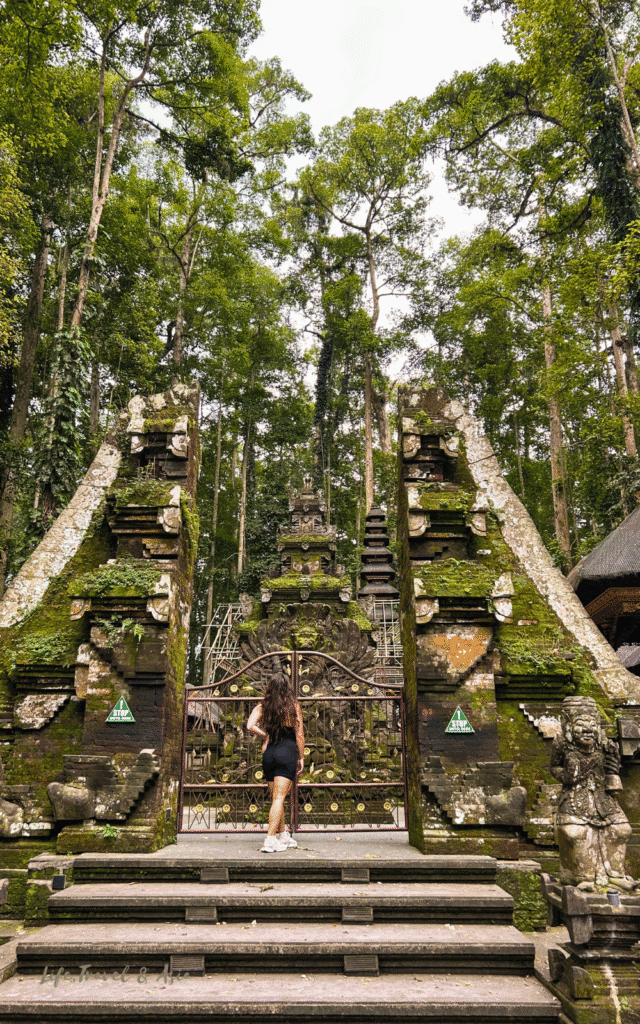
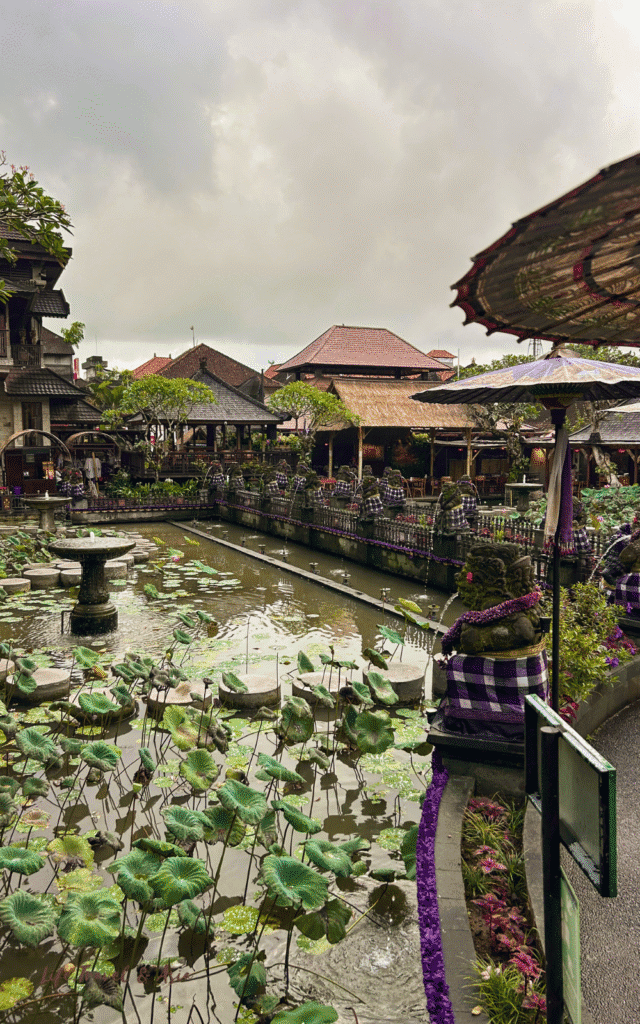
Ubud is known as Bali’s spiritual, cultural, and artistic hub.
It’s where you’ll find many of the island’s most important temples and spiritual sites, along with Indonesian and Balinese art galleries, plus experiences like sound healing, cacao ceremonies, and full moon circles.
It’s definitely the place for anyone who wants to dive deeper into Balinese culture while enjoying a jungle-and-rice-field setting. On the flip side, Ubud isn’t a party spot—so don’t expect late-night clubs or bars.
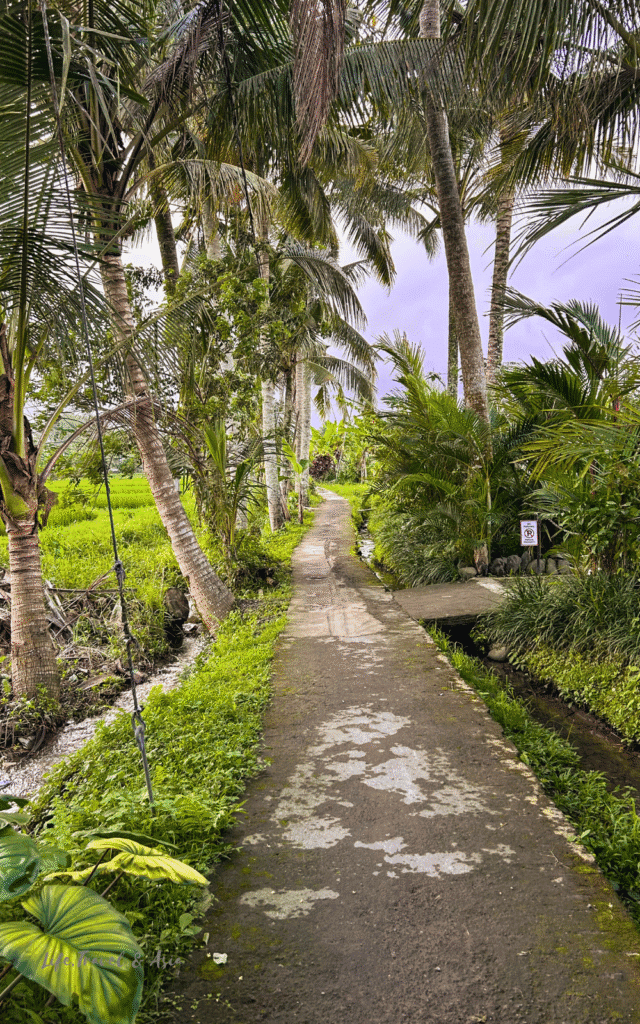
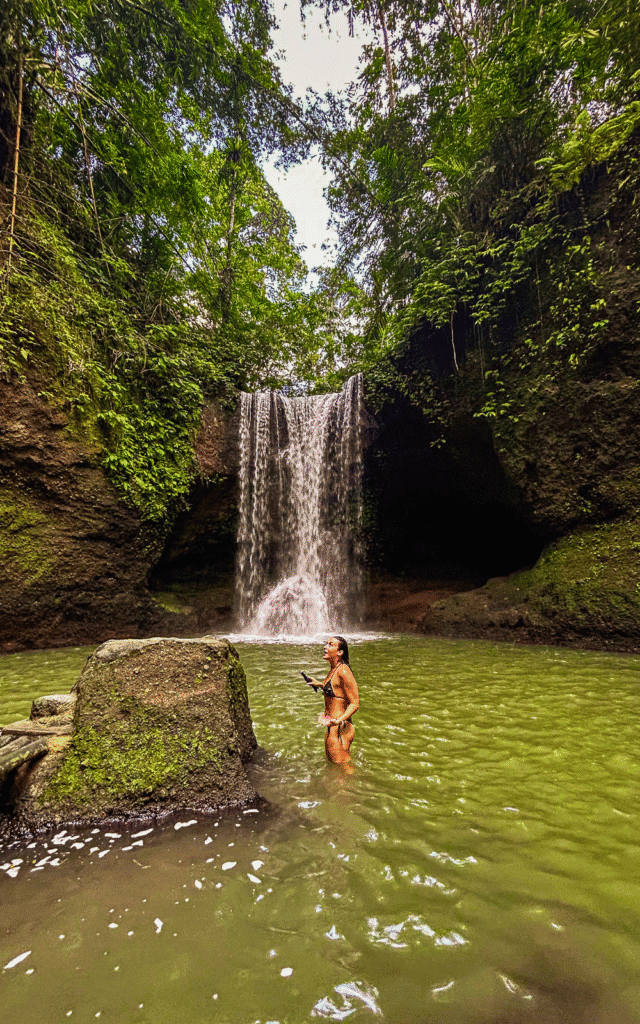
Pros & Cons of Staying in Ubud
| Positive | Negative |
| Great location for day trips | Very busy and trafficky main road |
| Many things to do & see | Over-tourism around the central area |
| Nature: jungle, rice fields, waterfalls, river valley | No beaches 🙁 |
| Closer to Balinese rituals, ceremonies & traditions | |
| Very walkable around the central area |
Ubud Quick Guide
Is it your first time in Ubud? Here are my top picks in town!
🌴 Best Rice Field Villa: Candy Villa
🛏️ Best Budget Stay in Ubud: Bisma Jaya Bungalow
Where to stay in Ubud: check out my guide to the best areas in town.
How many days in Ubud: From 3 to 5 days. Check out my Ubud itinerary for first-timers
🥗 Where to Eat in Ubud: Foodie’s Guide To Ubud Eats
📸 Favorite places to visit in Ubud: Rice fields, Gunung Kawi Sebatu Temple, and East Ubud Waterfalls.
Looking for more? Here’s my complete list of things to do in Ubud, plus my Ubud travel guide.
2. Central Bali: Bedugul Region
Bedugul is located in the Tabanan Regency, in the north-central part of Bali, along the main road between Denpasar and Singaraja.
This area is famous for its three lakes and lush mountain scenery, a completely different vibe compared to the south of the island.
Lake Beratan is the most well-known, home to the iconic Ulun Danu Temple, while Lake Buyan and Lake Tamblingan lie side by side on the other side of the mountain.
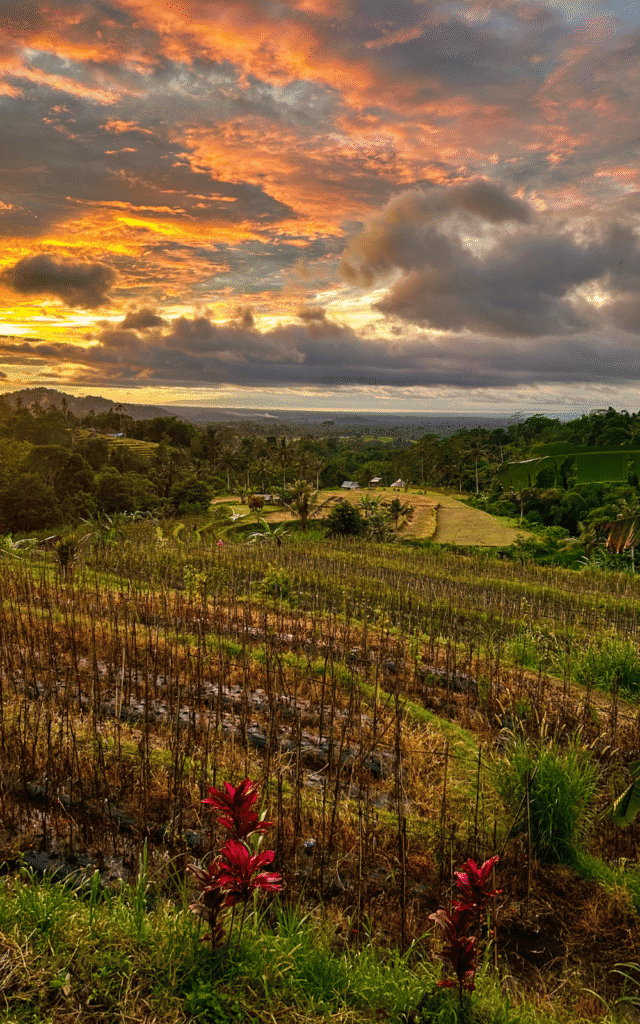
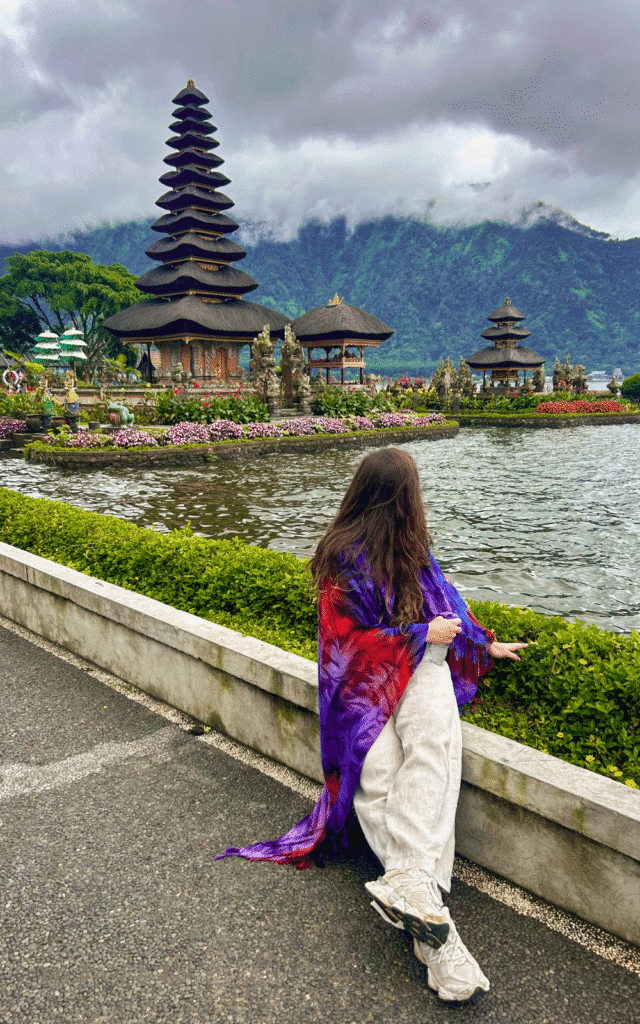
I honestly consider Bedugul a unique place to stay in Bali, even if only for one night. Here you’ll experience a different side of the island: authentic, traditional, and centered around agriculture rather than 5-star resorts.
It leaves you with a completely different impression of the island, compared to the busy streets of Ubud or the party scene in Canggu.
Additionally, some of my favorite places in Bali are located in this area, which is why I’m so glad my first trip to Bali included a night in Bedugul.
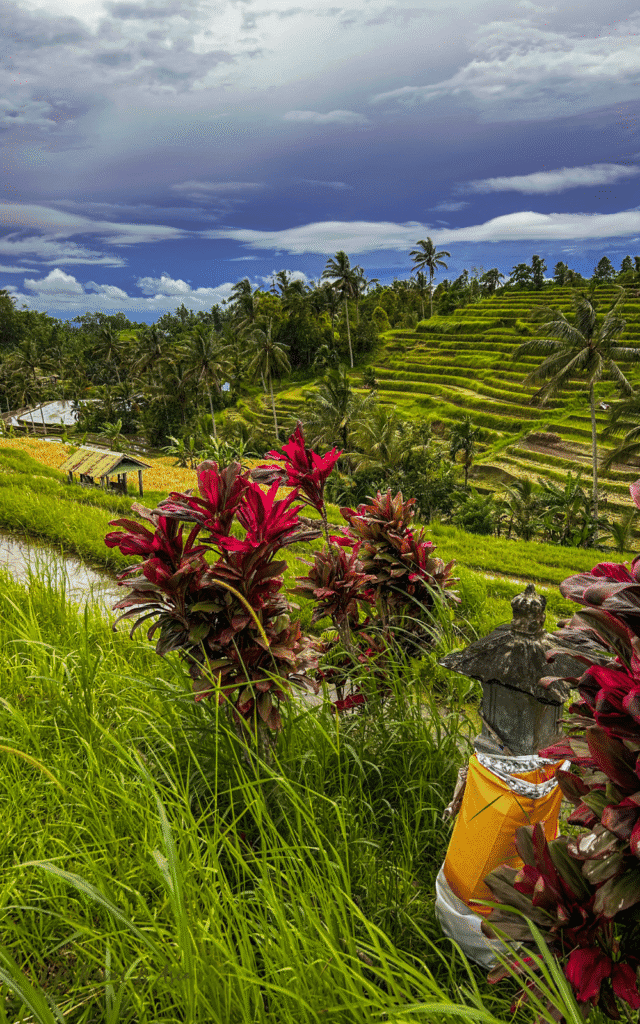
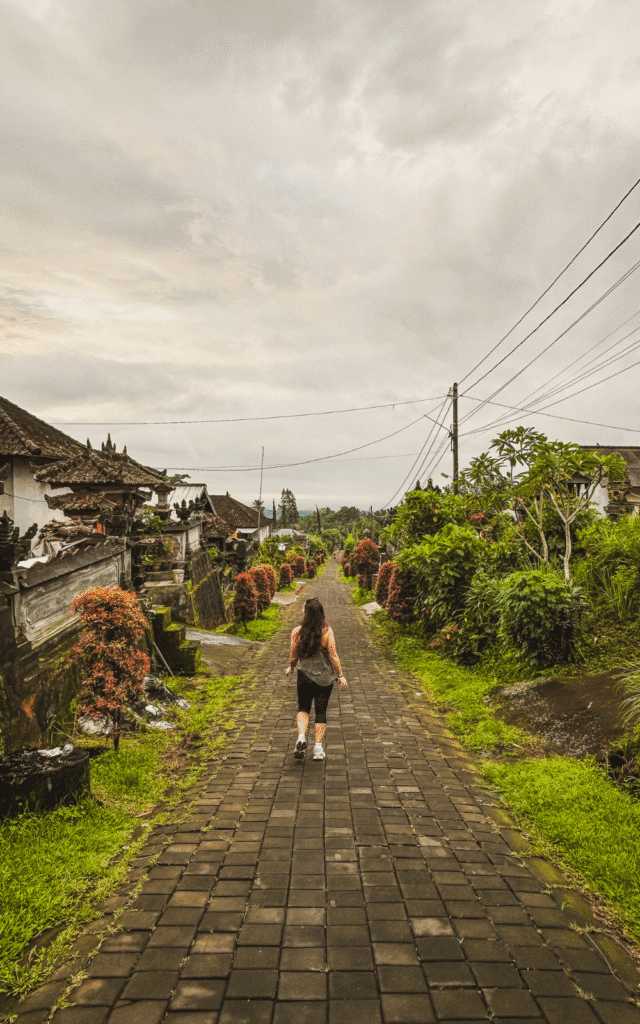
Pros & Cons of Staying in Bedugul
| Positive | Negative |
| Authenticity and local life | More wild with fewer infrastructures |
| Vibrant nature | Require hiring a driver |
| Sights like Jatiluwih and Pura Ulun Danu Beratan Temple | Cloudy and rainy weather |
| Less expensive than more popular areas |
Bedugul Quick Guide
Is it your first time traveling to Central Bali? Here are my favorites in the area!
🛏️ Best Place To Stay in Bedugul: Village Above The Clouds
How many days in Central Bali: 2 days, staying overnight. Check out my 2-day Central Bali Itinerary
📸 Favorite places to visit in Bedugul: Jatiluwih Rice Terraces, Pura Ulun Danu Beratan Temple, and Leke Leke Waterfall
Car Hire for Day Trip: 11-hour car hire
☔ Weather Alert: Central Bali tends to be cloudy and rainy, especially in the afternoons, so make sure to pack a raincoat or an umbrella. Keep in mind that even if it’s sunny in the south, it can still be raining up north.
3. North Bali: Kintamani
Kintamani is off most of the typical tourist path in Bali. Most visitors come here only to hike Mount Batur and don’t stick around to explore the area.
Personally, I think Kintamani deserves a spot on your Bali itinerary if you want to witness what I consider the best view on the island: Mount Batur with Mount Agung in the background, and the lake shimmering under the north Bali sun — on a clear day, of course.
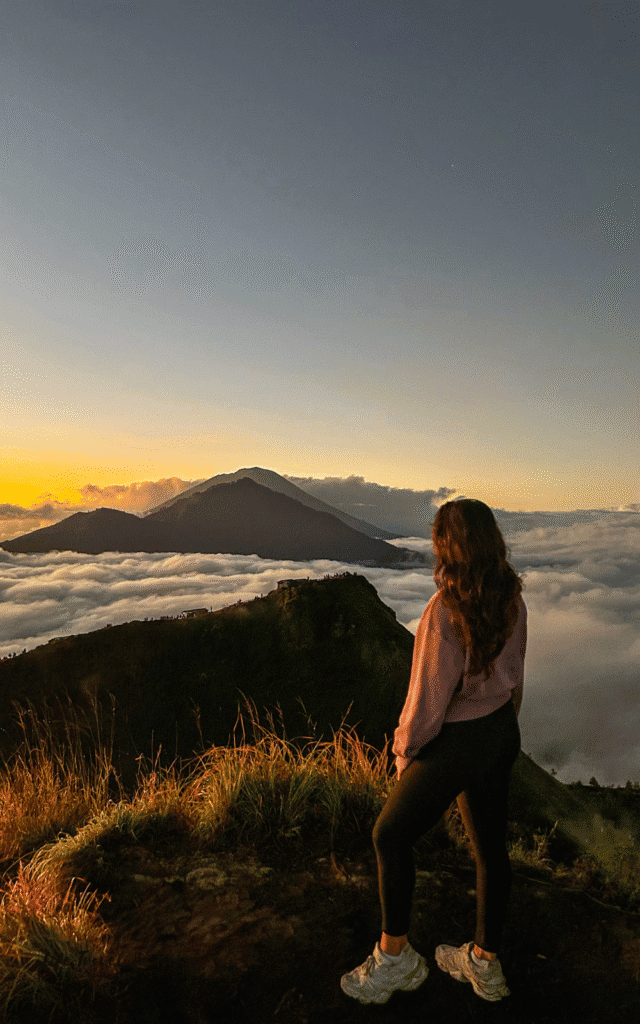
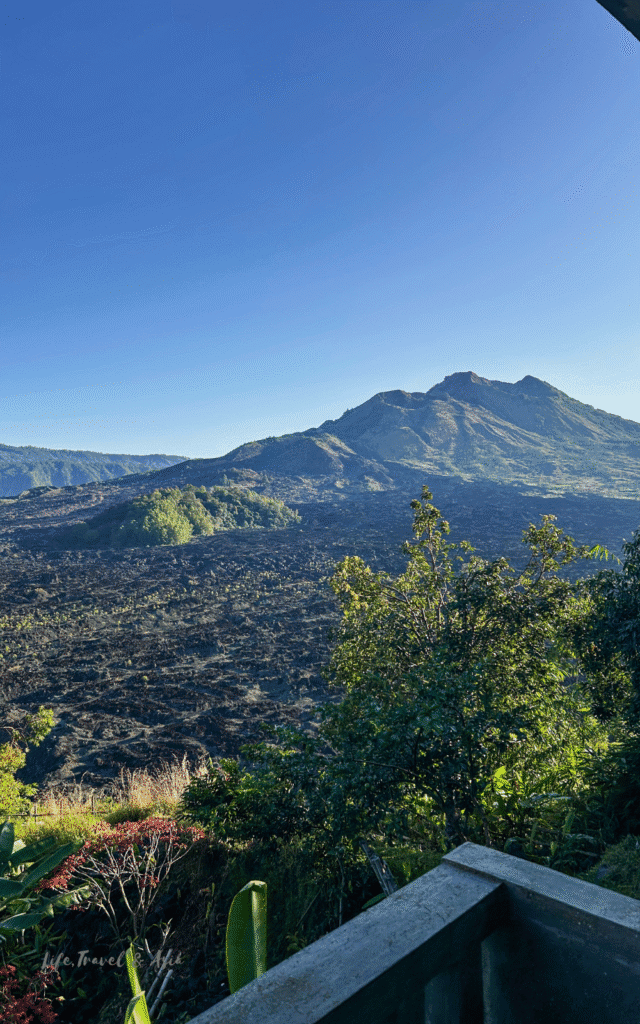
You come to Kintamani for the view, for the feeling of being surrounded by untouched nature, and for a side of Bali that hasn’t been impacted by overtourism (yet).
It does require a little more planning, since the infrastructure isn’t really there.
Besides hiking the volcanoes, there’s plenty to do in the area: cycling through traditional villages, exploring lakeside temples, or going on a thrilling ATV ride across the black lava sand.
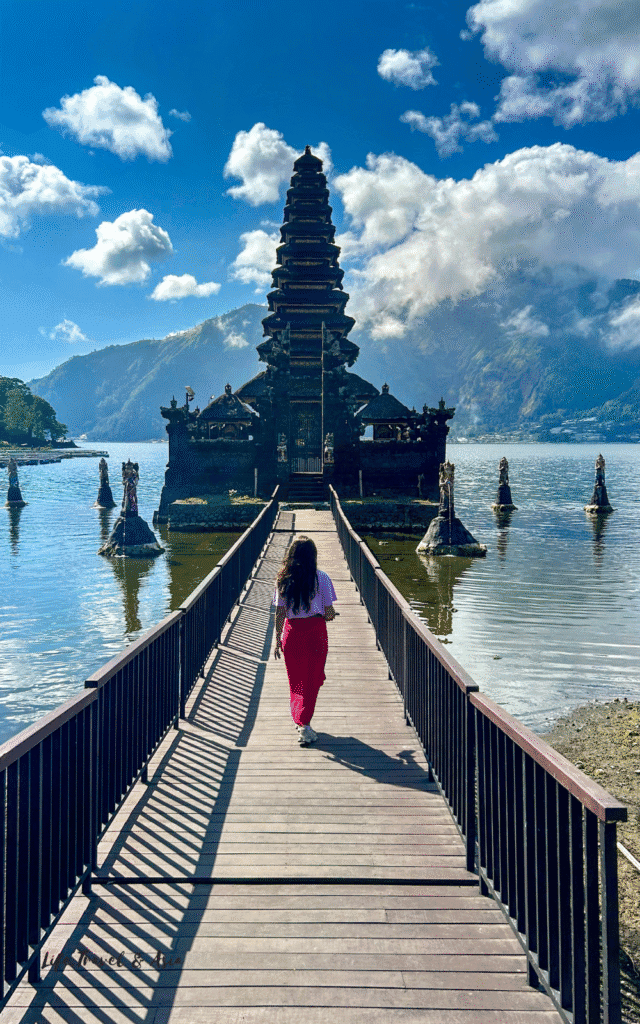
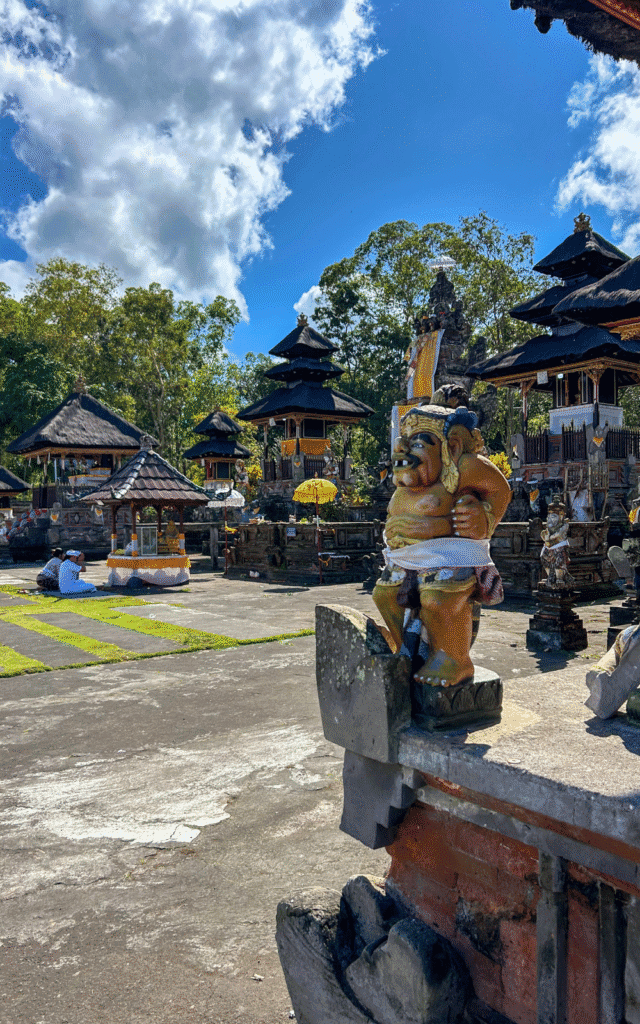
Pros & Cons of Staying in Kintamani
| Positive | Negative |
| Authenticity and local life | Isolated accommodations |
| Stunning scenery and lush nature | Require renting a scooter or hiring a driver |
| Less expensive than more popular areas | Weather changes fast |
| Plenty of things to do |
Kintamani Quick Guide
Is it your first time traveling to Kintamani? Here’s how to plan your trip.
🛏️ Best Hotel With A View: Ayodya Batur Villa
How many days in Kintamani: 2 full days. Check out my 2-day Kintamani Itinerary.
📸 Best Kintamani Day Tour With Add-Ons: Unique Mt Batur Trek and Lake Batur Boat Ride. Make sure to check my one-day Kintamani itinerary if you’re planning your own day trip.
Car Hire for Day Trip: 11-hour car hire
⛰️ Best Mount Batur Sunrise Hike: Tour From Ubud & Tour from Kintamani
Looking for more things to do? Here’s my list of the best things to do in Kintamani
4. Uluwatu: Relax, Surf & Luxury Vibes
Uluwatu is one of my favorite places in Bali, and if it were just a bit closer to Ubud, I’d probably want to go every week. I even considered living there when I first moved to Bali.
Uluwatu has that pure island vibe but with a luxury twist. The nature is wild and dramatic, but the area itself isn’t really walkable at all (which is one of the reasons I ended up choosing Ubud instead).
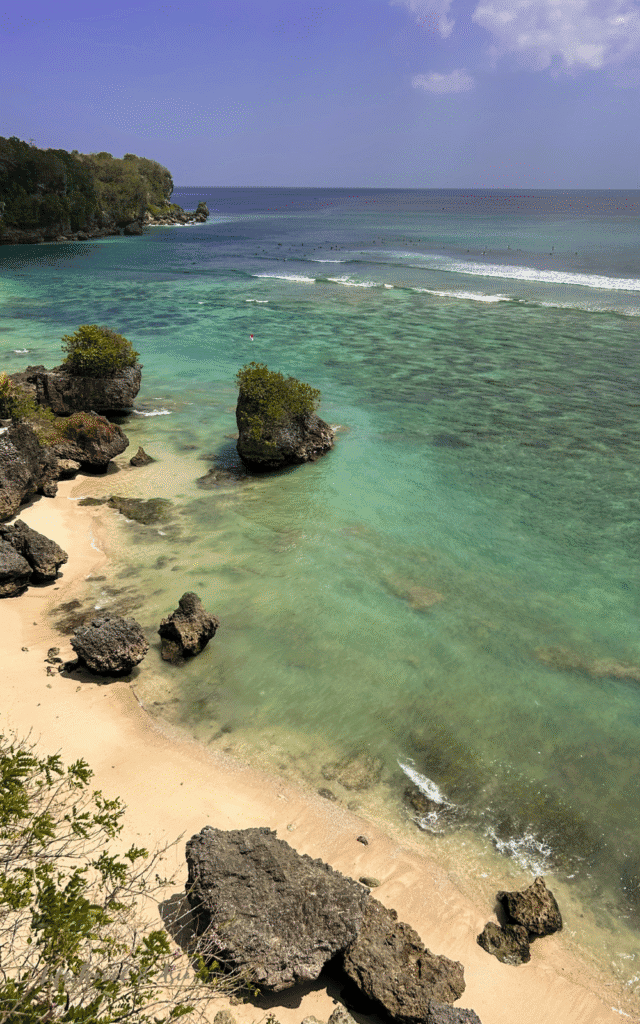
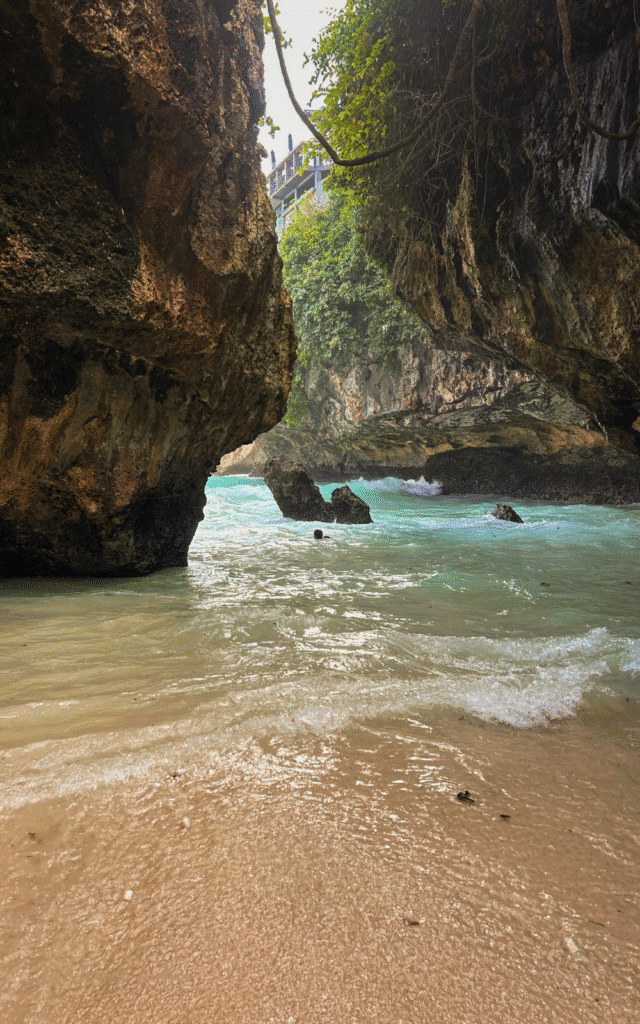
Even with all that wildness, you’ll still find little roads leading to extremely luxurious villas, the most Instagrammablecaféss, and super modern gyms (making Uluwatu one of the most expensive areas on the island).
In Uluwatu, you can take surf lessons, spend the day soaking up the sun on one of its gorgeous white-sand beaches, chill at a vibey pool club, or experience its nightlife when the sun goes down.
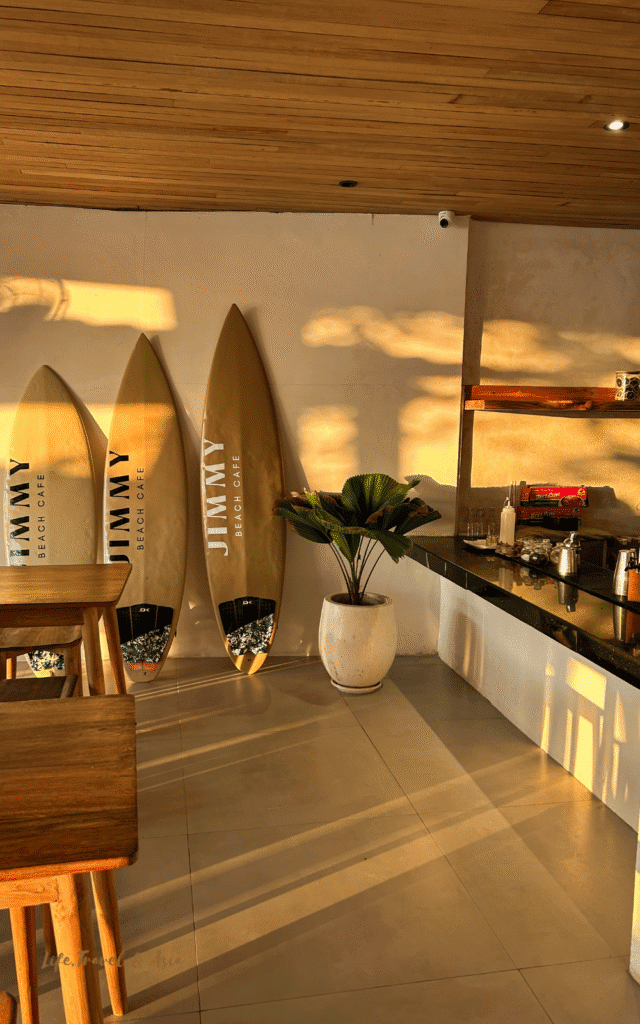
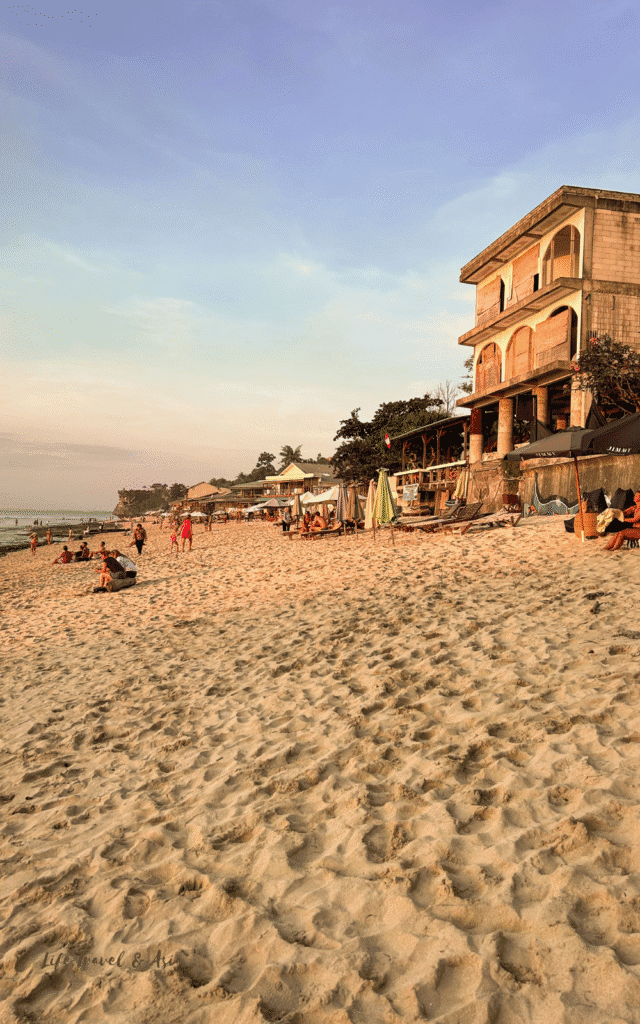
Pros & Cons of Staying in Uluwatu
| Positive | Negative |
| White sand beaches | Far from the rest of the island |
| Lively Nightlife | More expensive |
| Stunning hotels and villas | Not walkable |
| Easy to get around with Grab and Gojek | Not much connection with Balinese culture, rituals, or ceremonies |
Uluwatu Quick Guide
Is it your first time traveling to Uluwatu? Here are my favorites
🛏️ Best Budget Stay With Swimming Pool: Teges Asri by Bukit Vista
How many days in Uluwatu: 3 full days to make the trip worth it.
🏖️ Best Beaches in Uluwatu: Thomas Beach and Pemutih Beach
🍹 Best Restaurants in Uluwatu: Le Cliff & Artisan
5. Sanur: Relax, Beach Side Hotels & Family Time
Sanur is one of the most laid-back and calm tourist areas on mainland Bali. It’s the classic spot where families choose to stay, or even where many people decide to retire.
The vibe is incredibly relaxed: it’s walkable, has a lovely beachside promenade, many shops (including a modern mall called ICON), and long beaches where you can enjoy sunny days.
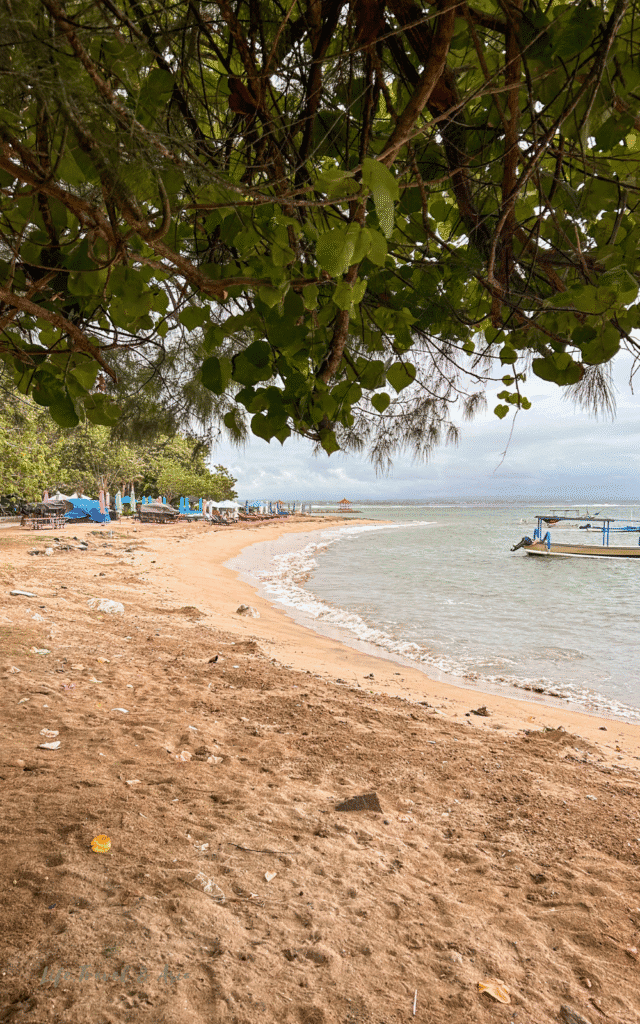
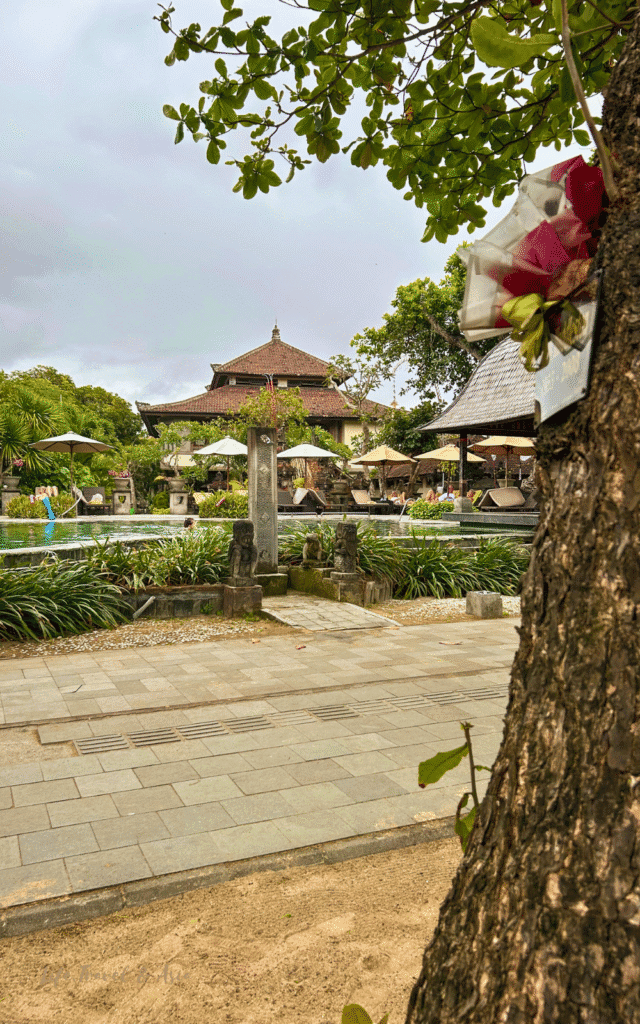
There are still a few bars and pubs with live music that stay open until late, but you won’t find many nightclubs or the kind of nightlife you get in Seminyak or Canggu.
Sanur isn’t really the place for young travelers or explorers. It’s much more ideal for families, older couples, or if you need to spend a night closer to the harbor before catching a boat to one of the nearby islands.

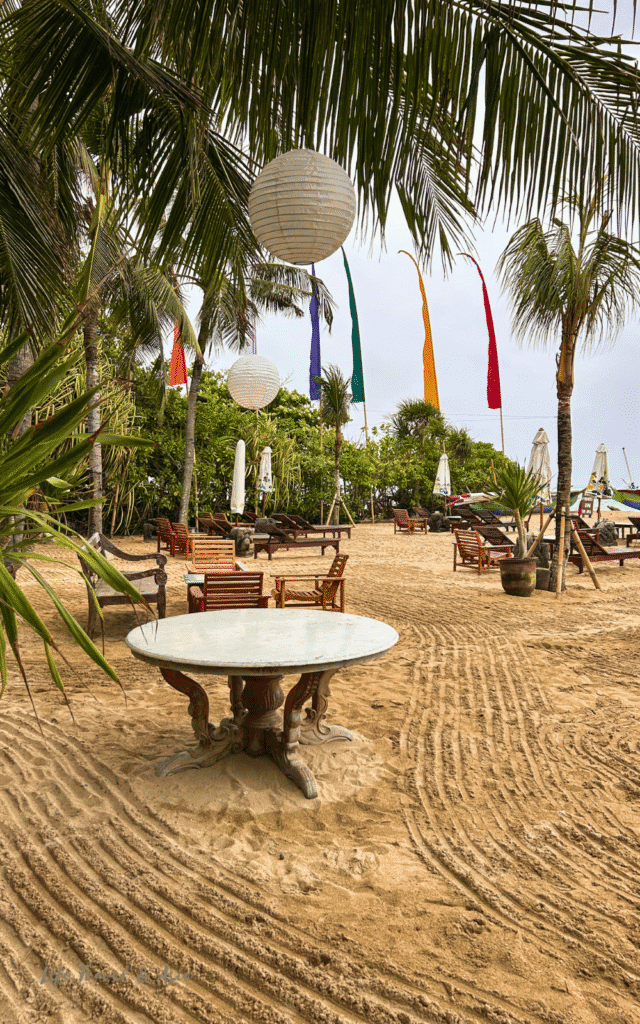
Pros & Cons of Staying in Sanur
| Positive | Negative |
| Calm, without crowds | Not much to do in town |
| Walkable and easy to get around | Not ideal for younger travelers |
| Beaches, shops and a Mall | Not walkable |
| Relaxed atmosphere | Not much connection with Balinese culture, rituals, or ceremonies |
Sanur Quick Guide
Planning to spend time in Sanur? Here are some tips to plan your stay:
🛏️ Best Hotel in Sanur: The 101 Bali Oasis Sanur
How many days in Sanur: I’d only plan to stay in Sanur if you need to catch a ferry from the harbor — in that case, one night is more than enough
6. Nusa Lembongan: White Sand, Sunsets & Flip Flops
I’ve just come back from my first trip to Nusa Lembongan, and I absolutely loved it. Remember when I mentioned Uluwatu’s island vibe with a luxury twist? Well, Nusa Lembongan is all about the pure, simple island lifestyle — no luxury twist here.
Think flip flops and sarongs, bumpy scooter rides, and hidden white-sand beaches scattered all around the island. You’ll still find a couple of vibey pool clubs, but don’t expect fancy restaurants or nightclubs — the atmosphere here is super laid-back and simple.
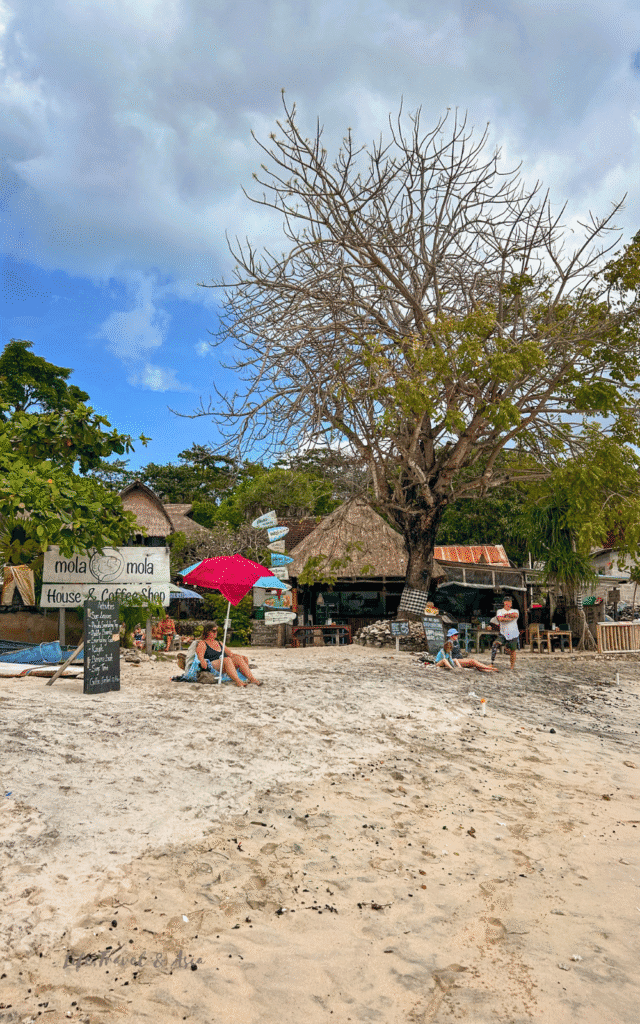
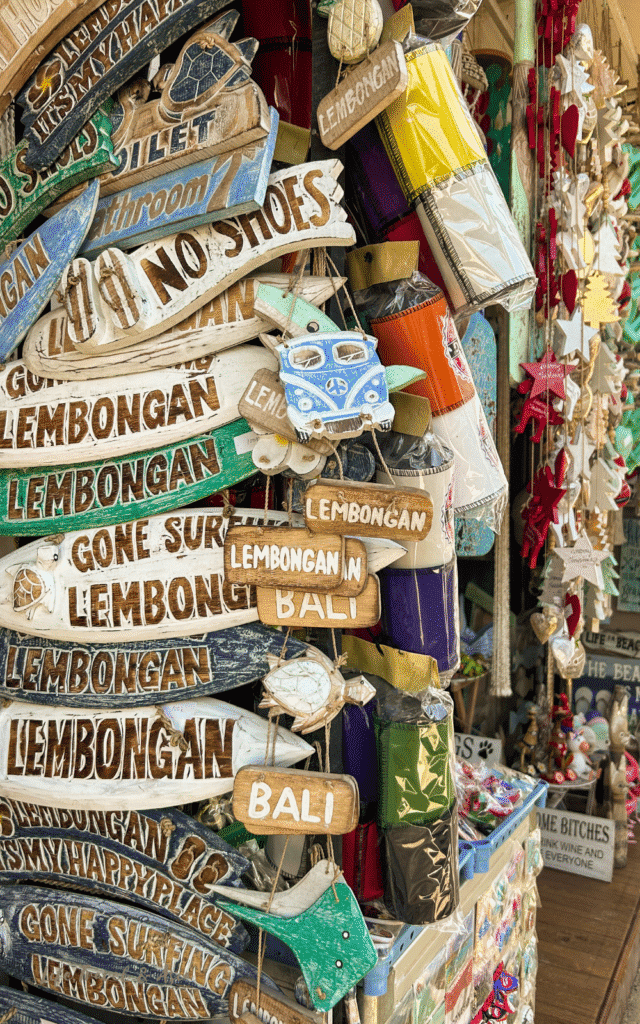
One thing I loved about Nusa Lembongan is how walkable it is. Beaches are easily accessible from many stays across the island, which means you’re never too far from a perfect sunset spot. And speaking of sunsets… here you’ll catch some of the most unforgettable ones in all of Bali.
Nusa Lembongan is the place to go if you’re looking for a relaxing stay: think beaches, sunbathing, snorkeling, and diving, and maybe even a day trip to nearby Nusa Penida and Nusa Ceningan.
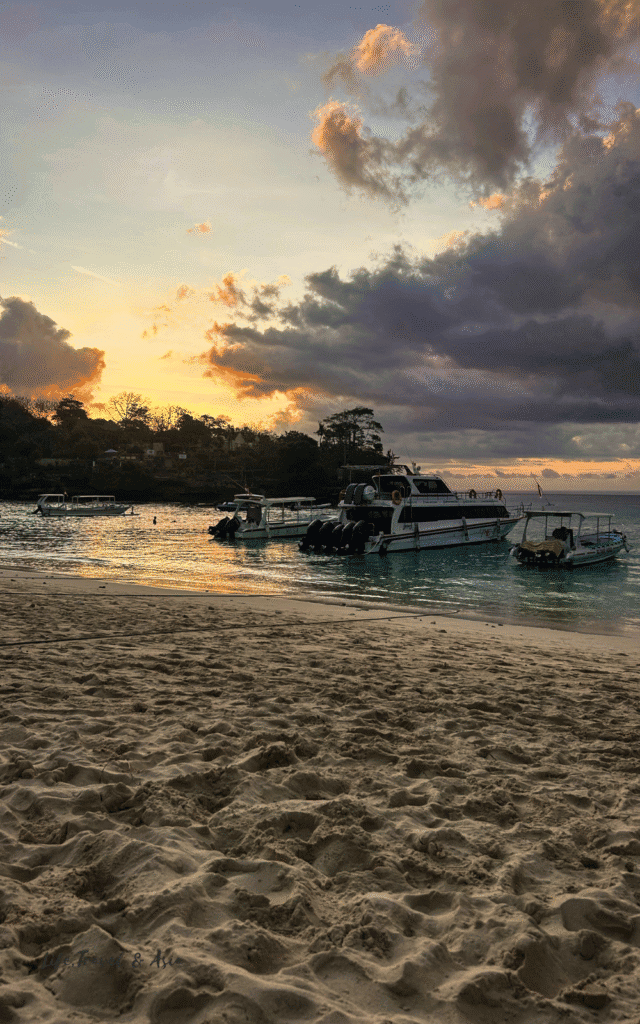
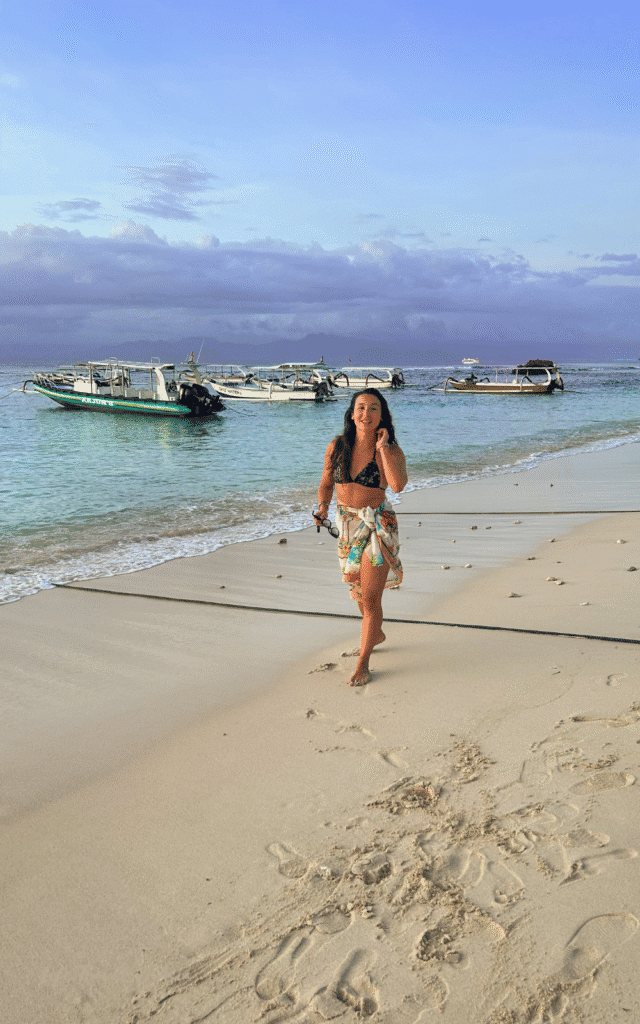
Pros & Cons of Staying in Nusa Lembongan
| Positive | Negative |
| Beautiful beaches and Island atmosphere | You’ll need to rent a scooter to explore the Island |
| Less expensive than Uluwatu | Bumpy roads, not well-lit at night |
| Not crowded at all | Harbor may close due to weather conditions |
| Plenty of things to do: snorkeling, diving, day trips | Nusa Ceningan is just 15 minutes away by scooter |
| Nusa Ceningan is just 15 min away by scooter |
Nusa Lembongan Quick Guide
Is it your first time on Nusa Lembongan? Here’s how you can plan your trip.
🚤 How to get there: Fast boat from Sanur Harbor. The trip takes around 30–40 minutes, and I highly recommend Dream Beach Express Fast Boat. You can book your ticket here.
☔ Weather Alert: Harbor may close due to bad weather or sea conditions. In that case, you may be forced to spend more time in Sanur (as it happened to me).
How Many Days in Nusa Lembongan: 3-4 days are ideal if you want to organize a day trip to Nusa Penida, plan the snorkeling experience, and enjoy the beaches. You can also plan a day trip to Nusa Lembongan from Bali if you have less time.
🛵 How To Get Around: Taxis (bike and cart), walk, or rent your own scooter from your accommodation or nearby providers.
🏝️ Best Resort in Nusa Lembongan: Hai Tide Beach Resort & Dream Beach Huts.
🛏️ Best Budget Stay in Nusa Lembongan: Pattri Garden
🐠 Best Snorkeling Tour: Snorkeling at Manta Bay, Crystal Bay, and Mangrove
🏖️ Best Beach in Nusa Lembongan: Dream Beach. Check out my guide to the beaches in Nusa Lembongan to discover my favorites.
🍹 Best Restaurant: Hai Bar & Grill. Take a look at all the restaurants I tried during my first trip to Lembongan.
8. Nusa Penida: Wild Nature & Dramatic Beaches
I haven’t actually slept in Nusa Penida — I only visited on a day trip — but I’m still adding it to this list.
While planning my last 2-week Bali itinerary, I did a lot of research on where to stay, and honestly, even just spending a day there gave me a good sense of the island’s vibe.
Nusa Penida feels wild and raw. Apart from the north-western area (where you’ll find most of the restaurants, bars, and accommodation), the inner part of the island is an endless stretch of green — palm trees as far as the eye can see and, yes, some of the worst, dusty, bumpy roads I’ve experienced in Bali.
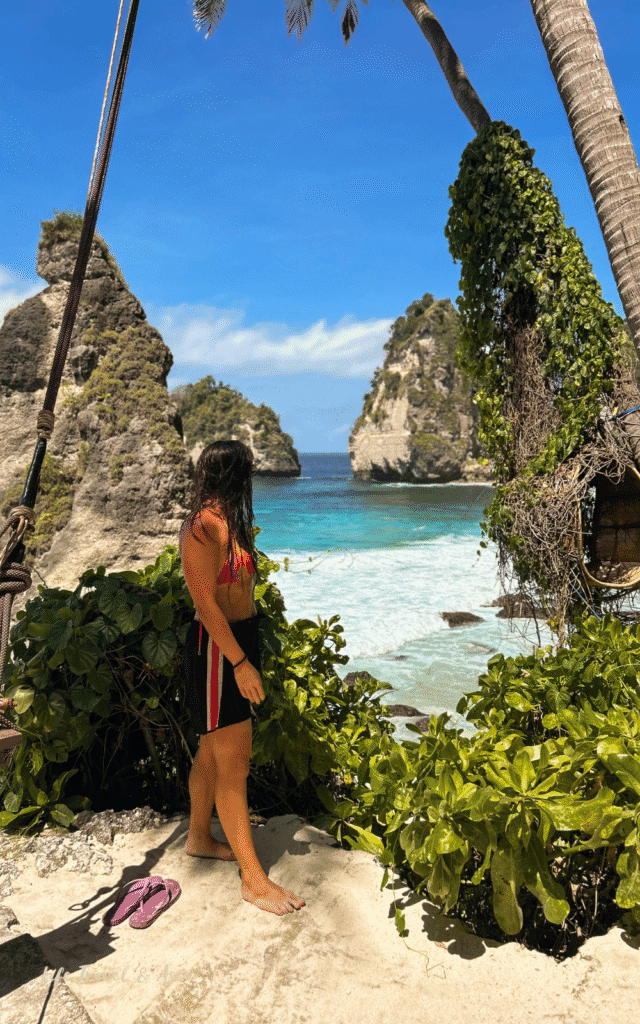
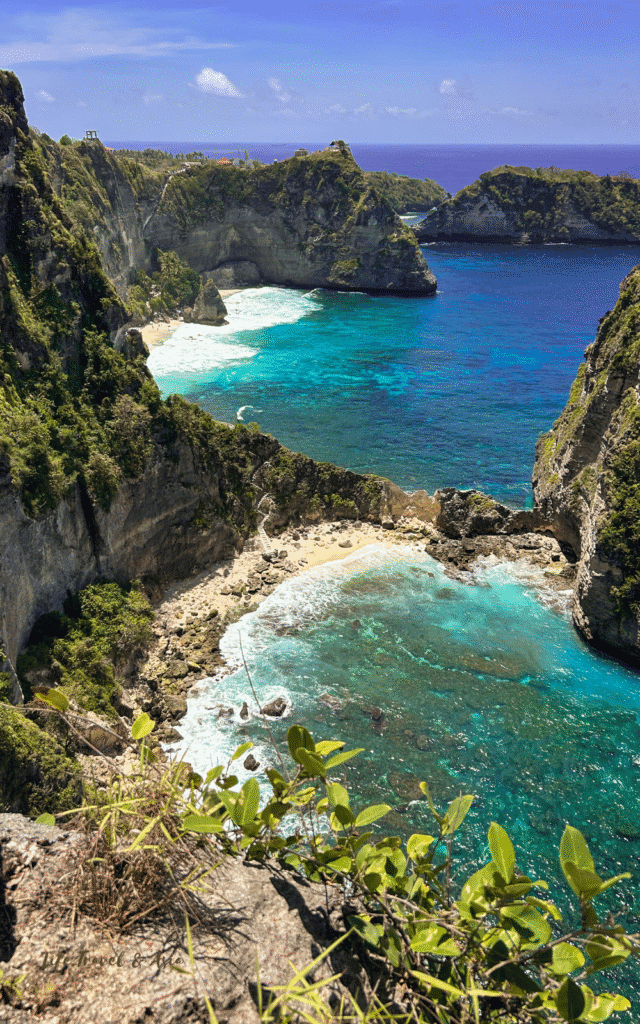
The western area also features some accommodations tucked away in nature, but it feels quite remote, which can be either a pro or a con, depending on what you’re looking for.
Because the island is so big, a single day is definitely not enough to see everything.
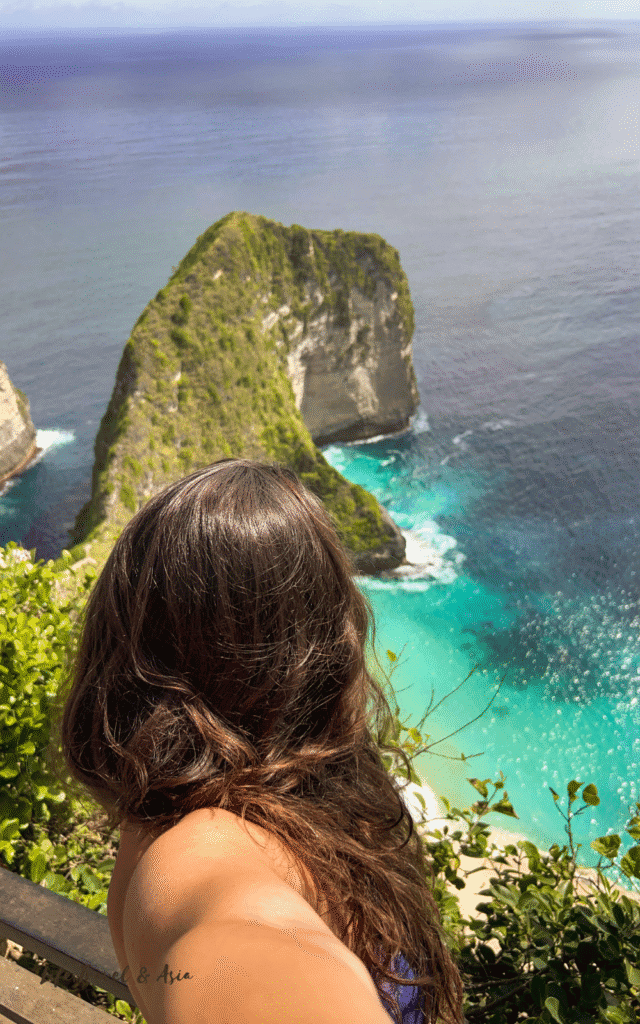
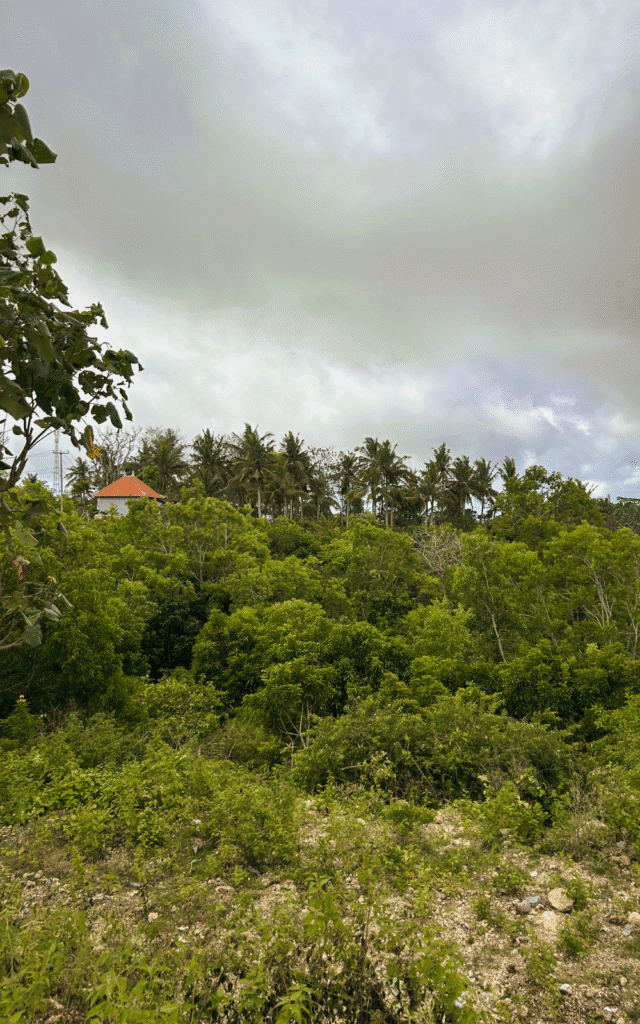
To really experience its beauty, you’d ideally spend at least a couple of days — enough time to explore both the eastern side (with Kelingking Beach) and the western side (with Diamond Beach).
And if you stay overnight, you’ll also get the chance to enjoy the major sights without the heavy day-trip crowds, which is a huge plus.
Nusa Penida Information
Here is some quick information on Nusa Penida.
How Many Days: 2-3 days to really see everything and avoid the crowds. You can also plan a day trip to Nusa Penida from Bali if you have less time available. Just be aware that visiting the entire island in only one day makes for a very rushed itinerary.
🛵 How to get around: While you can still hire a driver, renting a scooter is the best option. Roads are bumpy and very narrow.
⛴️ How to get to Nusa Penida: From Bali, you can take the fast boat from Sanur or Pandang Bai harbors. From Nusa Lembongan, you head to the port at the Yellow Bridge and purchase the ticket there.
Best 2-Day Tour Nusa Penida: Nusa Penida’s Two Souls – Slow Travel Adventure
Want to plan a quick trip to Nusa Penida from Bali? Here’s my guide on how to plan a day trip to the wildest of the Nusa Islands.
Are you wondering which Nusa Island you should visit? In this article, I help you figure out which island is the best match for your travel style — whether you’re all about adventure or craving a laid-back escape.
9. Gili Islands: Bycicle Rides, Turtles & Partying
During my first trip to Bali, I also spent 3 days on Gili Trawangan, the largest of the Gili Islands and super close to its neighbors, Gili Meno and Gili Air.
Technically, the Gili Islands belong to Lombok (not Bali), but since they’re only about a 2-hour ferry ride from Padang Bai Harbor, most travelers add them to their Bali trip.
The vibe here is similar to Nusa Lembongan, but with some differences. Gili Trawangan (where most people stay) is tiny compared to it.
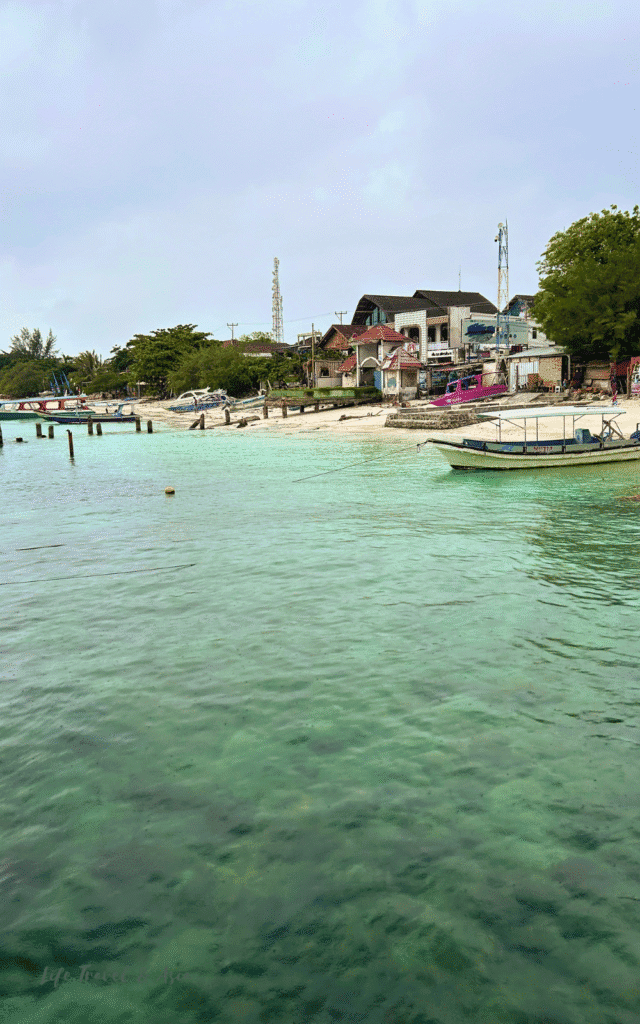
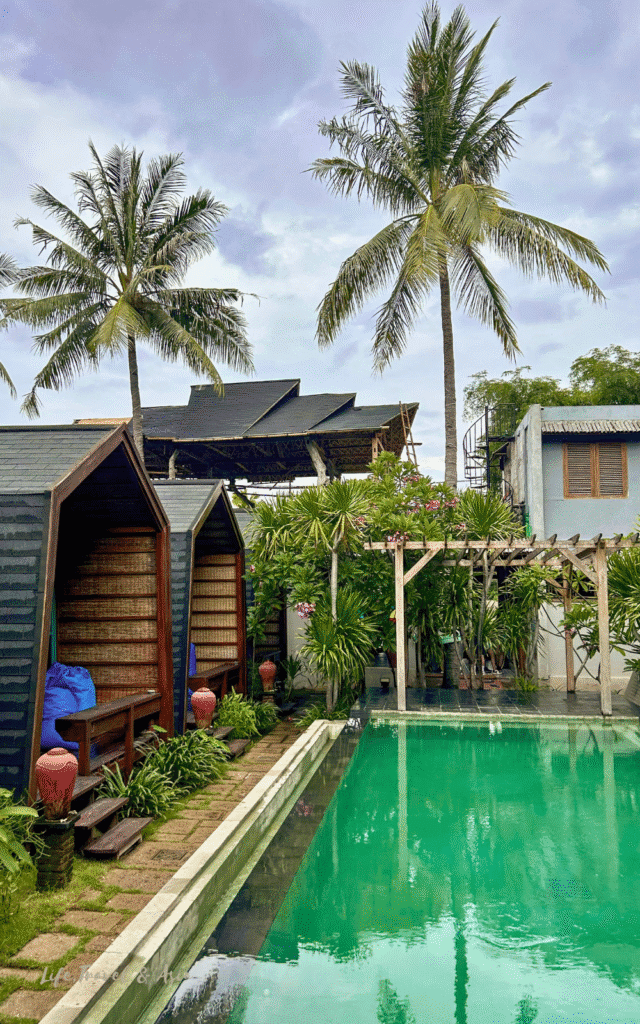
There are no cars, and everyone gets around by bicycle or small electric scooters. You can even cycle all the way around the island in about an hour!
What I loved most about the Gilis is the feeling of freedom — it’s the kind of place that instantly makes you feel carefree and truly on holiday. You’ll find beautiful white-sand beaches, fun beach clubs, fiery sunsets, and, on Gili T, especially, a big party vibe.
But the Gilis aren’t only about partying. Gili Trawangan is best if you’re young or looking for nightlife, while Gili Meno and Gili Air are way more chill and perfect if you want to relax without the crowds.
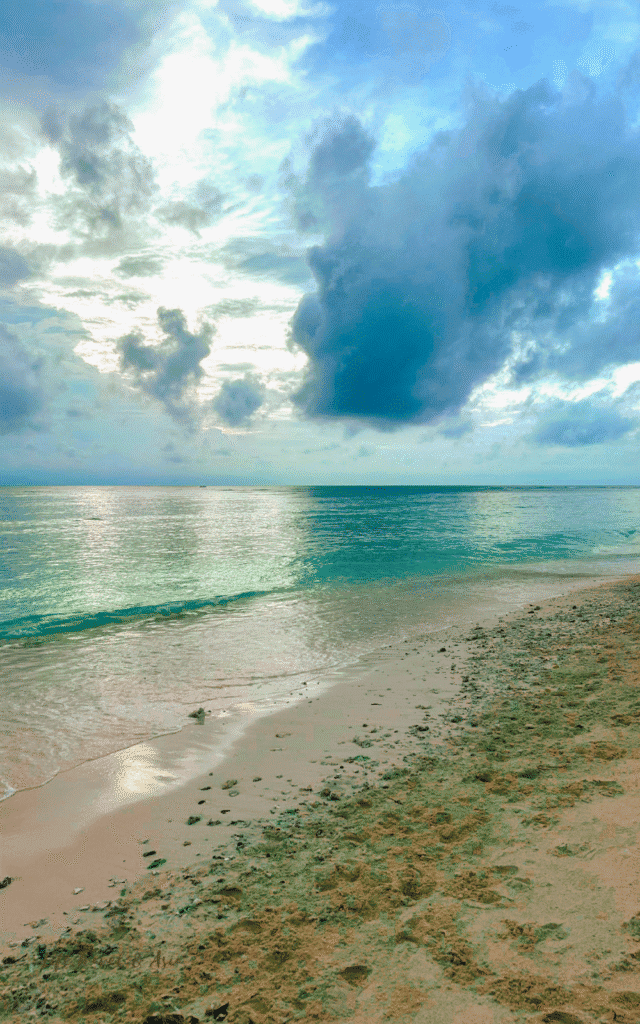
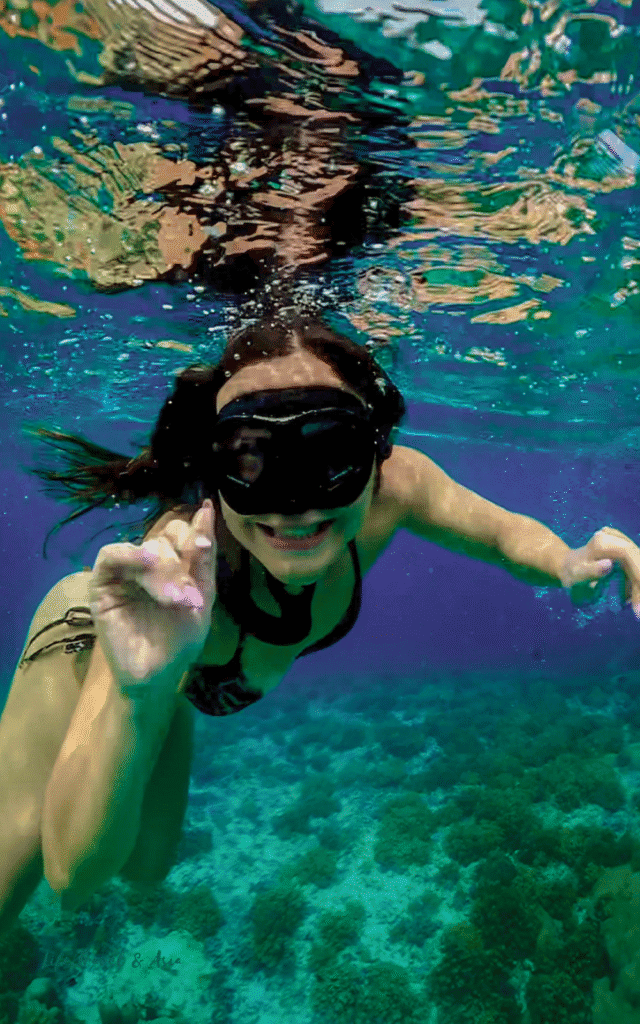
Pros & Cons of Heading to The Gili Islands
| Positive | Negative |
| Beautiful beaches and Island atmosphere | Very small |
| Less expensive than Uluwatu | Further away from Bali |
| Plenty of things to do: snorkeling, cycling and day trips | Harbor may close due to weather conditions |
| Many beach clubs, bars, and restaurants (especially on Gili T) | Gili T may get crowded depending on the period |
| Easy to get around by bycicle |
Gili Trawangan Quick Guide
Is it your first time traveling to the Gili Islands? Here are some of my trip favorites.
🚤 How to get there: Ferry from Padang Bai Harbor. The trip takes around 2 hours, and I highly recommend Ostina Fast Boat. You can book your ticket here.
☔ Weather Alert: Harbor may close due to bad weather or sea conditions. Make sure to book the morning ferry to Gili T, as sea conditions are usually better.
How Many Days around the Gili Islands: 3 days are ideal if you want to organize day trips to Gili Meno or Gili Air, plan the snorkeling experience, and enjoy the beaches.
🛵 How To Get Around: You can rent a bike or an electric scooter around the harbor area.
🐠 Best Snorkeling Tour: Gili Islands Snorkeling Boat Tour. Discover the best ways to swim with turtles around the Gili Islands.
🏖️ Best Beach Club (and Pizza): Malibu Beach Club
Want more information for planning your trip to Gili Trawangan and the other Gili Islands? Check out my Gili Islands Travel Guide with all the tips and best things to do.
Are you stuck in the Nusa Islands Vs Gili Islands debate? Here, I help you figure out which island group is the best for you, whether you’re all about adventure, resort-style vacation, or a mix of the two.
10. Seminyak: Beaches, Clubs, & Shopping
Seminyak is actually the last place on this list where I’ve stayed overnight — and honestly, it’s at the bottom for a reason. I’d only really consider it as a base for your first or last night in Bali since it’s close to the airport.
Another reason you might spend some time in Seminyak is for its beaches (though they don’t compare to the ones you’ll find elsewhere on the island) or for its party scene, with a couple of fun spots like Mexicola or La Favela.
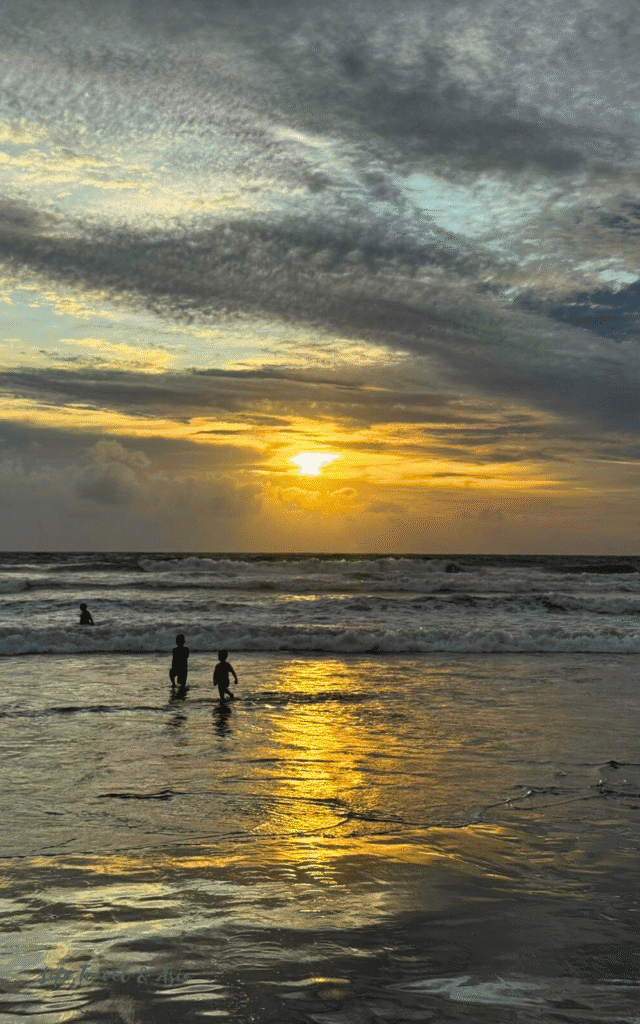
Seminyak is also great for shopping, trying out various good restaurants, taking a surf lesson, or simply spending the day at one of the many beach clubs, such as the famous Potato Head.
One of the main reasons I personally wouldn’t stay long in Seminyak is that there isn’t much cultural stuff to see, apart from the Petitenget Temple. So if you’re like me, it’s probably not worth it.
Pros & Cons of Staying in Seminyak
| Positive | Negative |
| Close to the airport | Crowded, very touristy |
| Lively party scene and atmosphere | Not many cultural sights to see around |
| Long beaches, sunsets, restaurants, and shopping | Difficult to connect with Balinese culture |
| Easy to get around with Grab & Gojek |
Seminyak Quick Guide
Spending a couple of days in Seminyak? Here’s how you can plan your trip.
How Many Days in Seminyak: 1-2 days. I would only plan on going to avoid longer journeys to and from the airport.
🏝️ Best Hotels with Pool in Seminyak: Tijili Hotel or Djabu Seminyak Hotel
🍸 Best Club: La Favela
15-Day Bali Itinerary For First Timers
Now that you know what to expect from these different areas to stay in Bali, let’s talk about how actually to plan your trip.
Personally, I think the best Bali itinerary should include a mix of Balinese culture (temples and traditional activities), a bit of adventure (waterfalls and hiking), and, of course, some beach time.
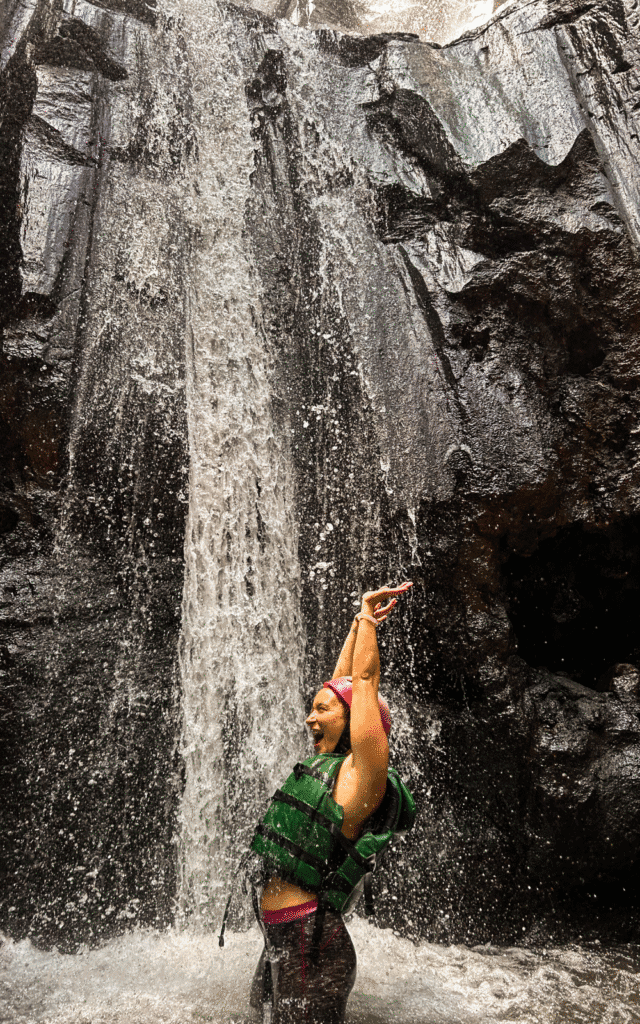
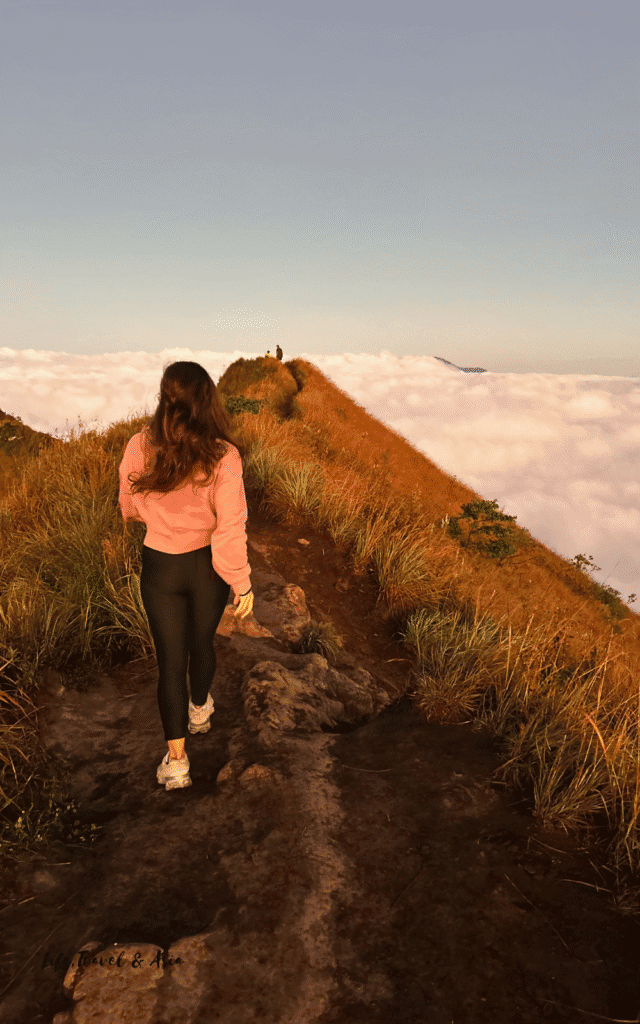
Here’s how I would plan my first time itinerary all over again:
- Day 1 – Arrival in Bali → Overnight in Seminyak (close to the airport, great for your first night)
- Day 2 – Travel towards Ubud
- Day 2–5 – Stay in Ubud as your base → day trips to Central Bali, Kintamani, waterfalls, and temples around Ubud
- Day 6 – Head to Sanur → overnight stay (perfect if you’re catching a boat the next day)
- Day 7–10 – Nusa Lembongan → relax, snorkel, dive, and take a day trip to Nusa Penida
- Day 11 – Travel to Uluwatu
- Day 11–13 – Stay in Uluwatu → beaches, surf, beach clubs, sunsets, and nightlife
- Day 14 – Back to Seminyak or Denpasar (stay closer to the airport for an easier departure)
- Day 15 – Departure
You can also swap Nusa Lembongan with the Gili Islands if you’d like. Keep in mind that it takes longer to get there, so you’ll probably need to cut out another stop.
And if you don’t have two full weeks, no worries — here’s my real first-time 10-day Bali itinerary, with all the things I’d do differently now.
Other Areas To Stay in Bali
Of course, there are plenty of other places to visit in Bali — some very touristy, and others where getting around without your own scooter can still be quite challenging. Here are a few more locations you might want to consider.
1. Canggu: Bali’s Digital Nomads’ Hub
Canggu is quite similar to Seminyak — you’ll find beaches, shopping, restaurants, and moderncaféss, plus a vibrant nightlife.
Being so popular with digital nomads, there are plenty of co-working spaces. That said, it’s incredibly crowded and, like Seminyak, doesn’t really give you the feeling of the “real Bali.”
2. Sidemen: Traditional Villages & Rice Fields
Sidemen is often described as what Bali might have looked like years ago: traditional villages, endless rice fields, and breathtaking views with no overtourism.
Nearby, you can visit the stunning Gembleng Waterfall, and Bali’s most sacred temple, Pura Besakih, is just a 30-minute drive away.
Like Kintamani, you’ll need your own transportation to get around, as the tourism infrastructure here is very limited.
3. Amed: Diving & Black Sand Beaches
Amed is located on the eastern coast of Bali, with unbelievable views of Mount Agung, and is mainly known for diving and snorkeling.
The beaches here have black volcanic sand, which gives the area a unique charm, different from any other island-like beaches.
The underwater world is one of the reasons why Amed is so worth visiting, in addition to being one of the least crowded destinations on the island.
4. Lovina: Dolphins & Relaxed North Bali Vibes
Lovina is located on the northern coast of Bali and is most famous for its dolphin-watching tours at sunrise and black sand beaches.
The atmosphere here is very laid-back, and besides dolphin watching, you can explore nearby sights like Gitgit and Aling-Aling waterfalls.
It’s not the place for nightlife or trendycaféss, but it’s perfect for a couple of days of relaxation on the beach and nature exploration.
There you go! Now you know what I believe are the best places to stay in Bali for first-timers.
If you’re now ready to start planning your trip in detail (from visas to packing tips, best time to visit, and little tricks to know before coming), make sure to check out my complete Bali Travel Guide with everything you need to know before departure.
Looking for More Bali Content?
- Bali Tips for First-Timers: 12 Important Things to Know Before You Land
- Bali On A Budget: The Guide You Absolutely Need In 2025
- 23 Bali Must-Haves: What to Pack for Bali’s Rainy Season To Have The Best Time
- Nusa Penida Or Nusa Lembongan: Which Nusa Island Should You Visit?
Did you find it helpful? 📌 Save it on Pinterest!


